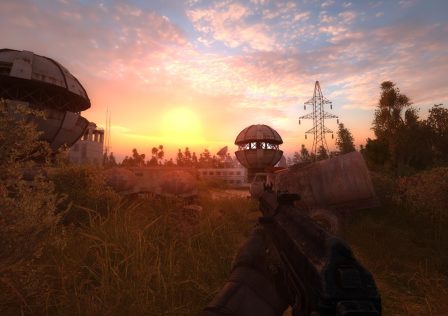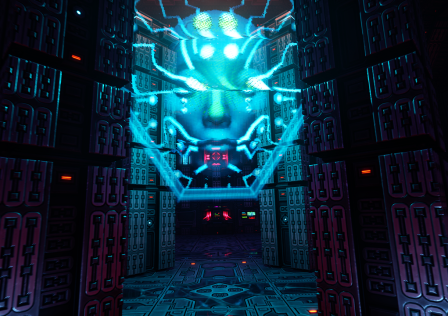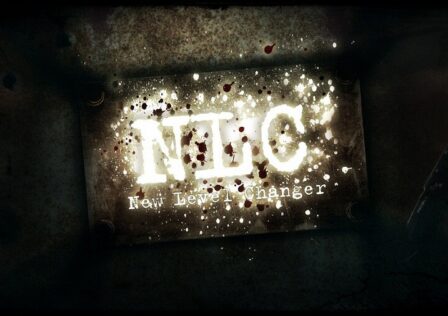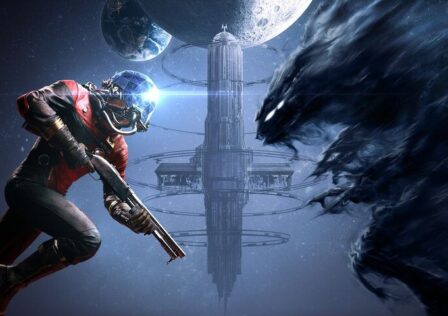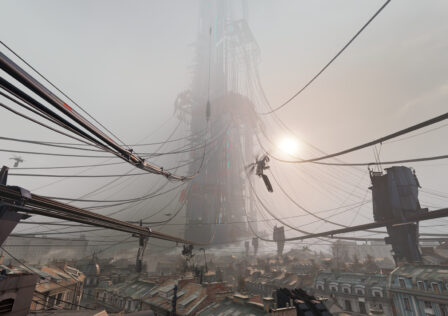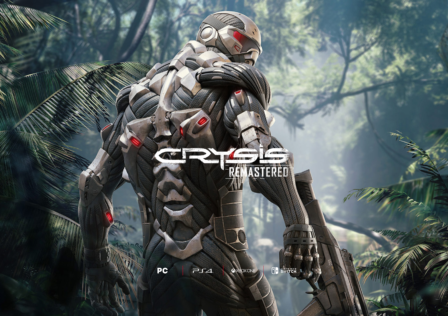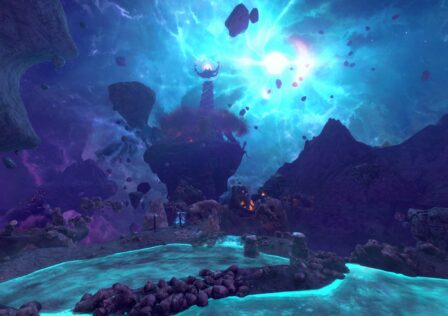Way back in March of 2007 a fairly small studio in Ukraine unleashed S.T.A.L.K.E.R.: Shadow of Chernobyl and introduced the world of PC gaming to The Zone!
It is no secret that this game is very well regarded here on GND-Tech and with good reason. This PC exclusive cult classic from 2007 is one of the most interesting and ambitious game projects of all time and a show of force for gaming’s potential as a unique art form.
A very interesting blend of genres, this open world FPS with survival horror elements and some mild RPG inspiration was well received by both critics and fans alike. Despite a troubled and long development cycle and numerous delays, a long list of cut features and many bugs and glitches, it seems like Shadow of Chernobyl has managed to carve out its very own niche in gaming. A series retrospective is in the works, as are articles on its sequels—S.T.A.L.K.E.R.: Clear Sky and S.T.A.L.K.E.R.:Call of Pripyat, but today we will be focusing on what the first legendary title did right and where it faltered.
Graphical Fidelity and Audio
Running on the in-house 32-bit X-Ray 1.0 engine that was created way back in 2001, the game was vaunted as a technological powerhouse during its E3 2003 and 2004 appearances. Managing to impress even in the face of games like Half-Life 2, DOOM 3, and Far Cry is an incredible accomplishment, especially when you consider that X-Ray is made by developers without prior experience in the mainstream AAA FPS gaming world. However, the game’s development hell meant that it would not see the light of day for a few more years. Of course, the developers did improve on its visuals during that time and Shadow of Chernobyl (hereby referred to as SoC) still managed to turn heads around during its 2007 release, but it was no longer the biggest visual powerhouse on the block.
Perhaps the most impressive piece of visual technology in SoC was its lighting system. Its completely dynamic DX9.0c lighting simulation was first demoed in 2004. Almost every single light source casts dynamic, soft DX9 shadows. From the campfires to the flashlights and even the sun. With an almost unlimited amount of soft shadows, the game can create and render complex scenes effortlessly, which also helps gameplay. Ironically, it can often do that better than newer games which have limits to the amount of dynamic shadows and lighting sources within a scene. HDR is also in effect and its implementation is pretty solid. Same for bloom effects. The only thing that is truly missing is ambient occlusion, something that Crysis would later pioneer and something that would be featured in its sequels.
Realistic 24-hour night and day cycles were also implemented, if shortened for gameplay purposes. Along with the aforementioned lighting system and a dynamic weather system, it adds great range to the game’s locales and atmosphere.
The animation engine is far less impressive though. No inverse kinematics and generally middling animation work. It does not look terrible at a distance and there is a good variety to the animations, but it could have been better. Thankfully many of the NPCs in the game have masks or helmets so that their 2002-esque facial animation does not stand out as much.
Open Dynamics Physics Engine (ODE for short) is used for the game. I have some mixed feelings about it though. It has shown itself being capable of complex ballistics simulations and pretty decent ragdoll physics as well as mimicking Newtonian laws quite well. Its implementation here is usually quite good, with lots of praise for the ballistic and armor simulations, but it has the habit of spazing out randomly and throwing objects around like crazy. It is often very fun to witness but it can and does ruin immersion when it happens.
Sound is handled in engine in a very nice way. High quality with distance effects and impressive range. One can also enable Environmental Audio (EAX) on Creative and Auzentech sound cards. When enabled, sound effects will become more realistic in 3D space.
All S.T.A.L.K.E.R. games use the OpenAL audio API and support EAX 2.0. It is strange that they use such an outdated version of EAX, but it is better than none at all. Note that none of the S.T.A.L.K.E.R. games have an abundance of actual environmental effects; enabling EAX only improves directional sound.
In Shadow of Chernobyl you can choose output device though it must be done through the console or in its configuration file (user.ltx). To enable its advanced audio effects such as EAX and hardware acceleration, you must have a X-Fi sound card and select it as your output device. If no sound card is present, then you are left with Generic Software output device and no special effects. Only X-Fi sound cards will get you hardware acceleration, which sounds so much better.
Since the S.T.A.L.K.E.R. games use OpenAL, this means they can be modified to use OpenAL Soft. This is an open source, completely software based implementation of OpenAL with its own custom HRTF. This means those without a sound card aren’t truly stuck using Generic Software output. To use OpenAL Soft, download it and place the 32-bit soft_oal.dll file into the bin folder for each S.T.A.L.K.E.R. game, and then select OpenAL Soft as the sound device. This will get you 3D sound processing and thus much better directional sound; stereo users (whether headphones or speakers) get a binaural sound replication, while surround users simply get better directional sound. It isn’t as good as hardware acceleration via X-Fi however.
Note that disabling sound acceleration (which can be done via console command or in an INI file) greatly deteriorates sound quality. Those without sound cards should really use OpenAL Soft and enable sound acceleration.
The S.T.A.L.K.E.R. games are also compatible with Rapture3D, which requires a sound card but ultimately is only about as good as OpenAL Soft anyway. Hardware acceleration via X-Fi sound card yields the best sound by far.
To truly get the most out of these games, I recommend using the Creative Sound Blaster X-Fi Titanium HD sound card (the highest quality X-Fi sound card) and a 5.1 surround setup (it doesn’t support more than that). All other X-Fi sound cards, except maybe the X-Fi Go! Pro (which might not be true X-Fi), do not have proper driver support for Windows 10 while the Titanium HD does, so the Titanium HD should provide a glitch-free experience unlike the others.
S.T.A.L.K.E.R.’s sense of 3D space and directional sound are second to none, at least when excluding the Y axis. It doesn’t do much with regards to height replication, honestly a newer and better EAX version (or OpenAL EFX using the latest instructions) is required for that, or better yet Dolby Atmos or DTS:X which allow you to place speakers on your ceiling to authentically reproduce vertical sounds. Still, every sound has its own 3D space, even things that normally don’t like thunderstorms. This, combined with the dynamic lighting and dynamic shadows results in some of the most atmospheric thunderstorms of any game, bested only by its sequels due to their dynamic wet surfaces and superior DX10/DX11 lighting effects. The rain engulfs you, every thunder strike has its own 3D space so it isn’t just coming from the front channels like other games, it can strike from anywhere.
The use of bass is also extraordinary. It is most notable when thunder strikes, and in the proximity of gravitational anomalies. Every sound, big and small, is greatly improved thanks to the outstanding 3D HRTF. Little things like moving through bushes, which allows me to truly hear myself moving past them as they fade from in front of me to behind me. It gives me a tactical advantage as well, being able to better place the sounds of someone talking or the growls of a mutant.
The sense of distance provided by S.T.A.L.K.E.R.’s sound processing is very good. Distant sounds are distinct and authentic. The only room for improvement with sound processing would be the use of all the latest EAX or OpenAL EFX instructions, providing a better sense of height, more environmental sounds like occlusion, dynamic echoes/reverb, more simultaneous environments, distortion effects, and even better 3D sound thanks to features such as MacroFX and PurePath (and EFX equivalents). EAX 5.0 was available at the time, best showcased by BioShock and perhaps Battlefield 2142. That level of environmental sound effects would have been more than welcome in Shadow of Chernobyl.
All in all, despite a long and very troubled development, Shadow of Chernobyl was a good technological showcase for its day. With great sound and very good graphics, advanced physics and peerless AI, it was head and shoulders above most other games of its day. With that being said, its 32-bit nature and single-core support as well as optimization issues do detract a bit, as do aged models and animations.
Presentation
Shadow of Chernobyl is available in many forms. A Steam version, a GOG version and retail copies still in circulation. The GOG version has zero DRM and all versions can easily be modded and are fairly inexpensive these days.
When it comes down to art style and design, something that is almost always more important than pure fidelity, GSC Game World knocked it out of the park. Atmosphere and immersion were obviously primary objectives for almost every part of the game’s very soul.
The best way to describe the art and feeling of the game is threatening and oppressive… yet alluring. Bleak, dead beauty emanates from all corners of the game world. At its very best it looks like a beautiful, calm place. Somewhere to spread a picnic by a roadside and rest, but even in those scenes the very art of the world somehow communicates danger. There is always something off, something inhuman in the Zone of Alienation and the developers managed to capture it. One can easily understand why the NPCs huddle together tightly around campfires at night, the atmosphere is just that good. Very few games can reach this level of loneliness and often all that is needed to make the player immersed into its bleak world is a simple gale of wind.
When it wants to be, the game is honestly horrifying. From lightning storms in the sky over a dead village, to the oppressive Soviet era underground laboratories. Tension and pure survival and psychological horror are on display. Effective use of shadows and colour, being hunted down by Special Forces in an abandoned factory during the night or running in a dark forest with distant fire of people being eaten by monsters is one of those feelings few games can ever manage to replicate this well. The art design, the way it can give every single location in the world its own identity, the way it communicates beauty, threat and death and even safety. The art team did an outstanding job on SoC!
Perhaps some of the only faults I have with the game’s overall aesthetic design are related to the nights. You see, in unmodded SoC, night time is actually not that dark at all. This slightly hampers the use of some of the game’s stealth and survival mechanics. Of course almost every mod addresses this, but it is still quite the odd design choice.
The general sound and music design is brilliant as well. Most of the game’s tracks are basically ambiance and help convey a key part of the game’s atmosphere. Very quiet and calm, not overt at all, yet extremely effective. This is just masterclass ambient sound design. Some of the songs in the game are used in the background at certain places. Tracks like “Dirge for The Planet” make an appearance and offer a surprisingly deep insight into some of the game’s major themes and ideas.
NPCs have the ability to use their guitars as well. There is nothing more calming than the distant beautiful and often even cheerful sound of a human using their talent around a campfire. The amount of tracks and their execution as well as just how memorable they all are is impressive.
There is a weakness though and it is with the voice acting. Now, some of the characters are decently voiced and they fit in, but the occasional cringe-inducing voice can be quite jarring. Considering the serious tone of the game, this can be a problem. An interesting choice however is background NPC chatter. A vast amount of it is in Russian no matter the language of the main game. This is a true bilingual bonus and I like it as it fits the atmosphere of the game world. The Russian and Ukrainian voice acting is quite decent, so it is a good choice overall. Unfortunately, no captions for what the NPCs are saying exists in the game, which is a pity as some of their jokes are awesome fun and the slang is well chosen. Even so, players seem to often find themselves spending time around the NPCs and listening to stories they might not understand. The atmosphere and quality is just that good.
When we enter the user interface design section of the review, GSC Game World managed two things. First, whilst it does fit the game world and its aesthetics, I do think it is not all that good looking overall, hell I dare even say it looks ugly. Of course this is somewhat subjective as aesthetics often are. With that being said, the actual function, speed, accuracy and usability of said UI is easily some of the best I have ever seen in a game of similar scope and caliber. The player can equip their entire arsenal, change armors and artifacts within 2-3 seconds in the inventory screen. No space is needlessly wasted, no need for super complex menus that would slow you down and make things more complex. Just pure speed and usability. Of course, selecting an item will allow a player to read up on some lore and extra info as well as stats, but even that is integrated into the menu. The prequel and sequel both polish all of this to an even greater extent and add needed features but even as it is right now, the UI is simply great. What is missing however is category filters within the inventory, e.g. enabling a Weapons filter to only filter weapons, and the same for armor and healing items.
The Personal Data Assistant the player has is also a pretty neat feature. It contains a map as well as objective and quest markers. A pretty neat diary and encyclopedia also get regularly updated and provide both world and character info. From pages on anomalies and mutants and factions to entries on some of the game’s important quests and revelations or downloaded info from other game characters. It is appreciated info.
Perhaps the most damning issue with the game though was how buggy and unpolished of a game it was. On release, S.TA.L.K.E.R.: Shadow of Chernobyl did not want to play nicely with 64-bit operating systems, it crashed (more than usual) on Windows Vista, it had broken quests and graphical glitches. It was rightly critiqued for its incredible instability and lack of basic QA polish. It was (ironically) rushed to release.
However, GSC didn’t leave it as is and released several patches which greatly improved things. Before them, finishing the game was often a luck of the draw matter but nowadays it is fairly stable. Still, some issues persisted but thankfully this is where the community came and these days, whether via separate mod packs or as a standalone modification, people can use the Zone Reclamation Project (ZRP) mod. It is a truly amazing feat of love and modding as it amounts to a big bug fix mod. Vanilla purists are still encouraged to try it just patched if they want to, but for most other new gamers that want a stable first try at the series it is a very good solution.
If only many the game had released in its patched state, or better yet a state equal to the fully patched game plus community fixes. Its reception would have been markedly better.
Storytelling
Shadow of Chernobyl is a very derivative work that was heavily inspired by several literary and film classics. Stalker, the eponymous movie from Andrey Tarkovsky, as well as the classic science fiction work Roadside Picnic written by brothers Arkady and Boris Strugatsky (which Stalker is loosely based on), are obvious as their themes and ideas have deep roots in the game. But as one digs deeper it is obvious that old Westerns and the Klondike Gold Rush were on the back of the developers’ minds
The Zone is a man made hellscape which is no longer under man’s power. When a human finds themselves in it, they are once again under the complete crushing power of a corrupt, alien version of nature itself. Shadow of Chernobyl puts players in a place where the adventurous and the damned go to find wealth in a dark, modern science fiction version of Yukon or the old Wild West. The prize for these people can range from survival to monetary wealth, to advancing science and engineering or defeating mortality itself (if they find the ultimate creations of the Zone).
The game sets up the player to explore this vast world with the protagonist and his (at the start of the game that is) limited backstory. Yes, it uses the tired old amnesia cliche to start the player with a blank slate character and slowly introduce them to the game world. The protagonist, called Marked One, is a blank slate for the player, at least most of the time. This lets players more easily immerse themselves into the game, and sets interesting precedents when late in the game he gets a small bit of personality of his own.
Throughout the journey, many different people will guide Marked One from objective to objective. The game also has 7 endings, not all of which are easily obtainable. There is even an “Egyptian Pyramid” twist in the final levels of the game.
The main attraction though is the Zone which is easily one of gaming’s greatest ever locations. Not only its level design (which is excellent, if toned down from the original vision) but the way it can easily layer both ideas and scenarios whilst leveraging powerful iconography. It is a place where every single thing is trying to murder the humans daring enough to enter it, whilst rewarding the most daring of all. Frequently the characters will reference how the current madness for getting the magical artifacts reminds them of the Klondike Gold Rush. An added bonus of course is how the corpse of the dead Soviet empire and its many legends and myths has been used as a basis for the game’s science fiction. Especially the most horrifying parts.
One of S.T.A.L.K.E.R.’s most powerful storytelling (and gameplay) traits is its use of a technique dubbed “environmental estrangement.” Originally coined by Matt “Steerpike” Sakey, it is a technique that enables developers to imbue games with a wider and subtler spectrum of emotions and an intensely powerful, intensely personal sense of immersion.
In most games, the environment is just a backdrop. It is a part of the experience, but it is not in itself too important to the game’s narrative or gameplay. Even exceptionally well made games of the FPS genre like Half-Life or DOOM or Wolfenstein have a “gameplay and the player first” mentality. Whilst they understand the “show, don’t tell” aspect of level design their service is ultimately to the player. I am in no way saying that is bad or inferior, but it is different to what Shadow of Chernobyl’s world is made to do. The world in all 3 S.T.A.L.K.E.R. titles and most fan made mods was made to be a world first, something for the player (or even humans in general) second. The player character is not the protagonist of this story. The Zone is, it is the center stage character and the best developed one in the entire series.
As video games advance as an art form we have seen their emotional range expand. Shadow of Chernobyl can evoke all of the “simpler” feelings such as sadness or terror or anger and it manages to make them feel incredibly strong. But that is not its limit. More complex, subtle emotions which very few video games manage to convey are simply and instinctively communicated from the environment and the game’s major, universal themes. Melancholy, resentment, respect for thy fellow man even (at times)—a very impressive thing for any game to do.
S.T.A.L.K.E.R.: Shadow of Chernobyl uses environmental estrangement, a combination of writing, iconography, and world design to snatch you from our real world and put you into another one; one that is unwelcoming, aggressive, alien, alluring. Creating strong emotional and thematic connections to this fictional world is the reason why so many fans love the Zone. The very dare against nature which humanity won in Yukon’s Gold Rush and the Wild West seems to make all of the Zone’s danger even more beloved for gamers worldwide.
Key to this is not only the internal consistency of the game’s world and universe and general world design, but also the advantage of it being based on a real location. GSC Game World is a Ukrainian game studio so they had easier access to the actual Chernobyl Exclusion Zone and they used it to full effect by methodically modeling parts of their game world according to the real one. Capturing the eerie real world location was a hard task, but they managed to pull it off. In accomplishing this task, they were able to transplant the lauded feeling of loneliness that exists in the real Exclusion Zone. To be fair, from a high level geographic overview the game’s world is not close to the real world Zone, but that is hard to notice as one plays the game.
As for more standard ways of storytelling, Shadow of Chernobyl knows how to expand its own lore and universe really well. For example, for those that can understand it, the chatter of NPCs around the campfire contains inside-jokes, references, Zone jargon and many stories about events within the game world.
Apart from that it also makes good use of a PDA Encyclopedia system. Within it, as time passes and bodies are looted, one can find stories, folklore of the Zone, backstory and information on anomalies, mutants, enemy factions and areas. The game’s writing here is simple, somewhat informative but often ominous enough or incomplete enough to get the imagination going. This is perfect especially for the monstrous creatures and terrible hellholes the player will get to fight. Usually they are not all that difficult, but the very atmosphere and expectations imagination can create do make these encounters more stressful and memorable.
Now lets speak of the big problem with the game’s storytelling, and that is how well it communicates its main plot. You see, whilst Shadow of Chernobyl mostly succeeds in the monumental task of tying the players to its own world and making them feel more alive in it (just like many of the people in the Zone) and even showing respect to both the real Chernobyl disaster and its literary and cinematic inspirations, it simply fails in communicating the simpler messages to its players. Its in-engine cinematics are not a good fit with the game, not all important dialogue is voiced (which is an issue to some gamers but not necessarily a flaw) and a lot of secondary dialogue and diary entries may be missed by even experienced and attentive players. The game would have benefited from being slightly rewritten and paced in a different way, so the overall experience of understanding its story completely may be a challenge to some for no real reason (since the actual storyline is simple, themes notwithstanding).
Another fairly big issue is that the game lacks strong characters bar the actual Zone itself. Yes, the level of the background NPC in S.T.A.L.K.E.R. is much higher than in other games, but the actual story related characters are mostly just decent. Nothing more, nothing like the intense character-driven storytelling witnessed in Tarkovsky’s work. Very few of them undergo any significant development or are deeply layered.
The factions the game shows us are all very interesting in concept and ideals, not to mention equipment and tactics, but they also feel somewhat underdeveloped. The ideals are there, the writers did the hardest part but not much more was done.
Overall Shadow of Chernobyl is a big step forwards for video game storytelling. It is an example of why immersion, themes, world design and gameplay are tied and work best together to create a true, deep video game only experience. It also manages to stand as a good example of remediation to both literature and cinema’s finest whilst still keeping its video game identity. The emergent systems and deep gameplay loop (to which we will get to in a second) make for a personal and unique experience. Creating your own world from scrap with mostly background text and imagination and doing so without downplaying the real tragedy that was the Chernobyl Nuclear meltdown is extremely impressive.
But when you aim so high with high concept ideas and themes, the devil is in the details and execution. And Shadow of Chernobyl has many, generally small issues piling up to hurt its main storytelling. Roughness can be awesome in gameplay, and in moderation to storytelling as well, but there is a limit to how much it can work. Excellency in ambition, victory in many of the hardest storytelling parts, but a disappointment in the smaller, usually easier to write or establish parts.
Gameplay
Gameplay is really the bread and butter of S.T.A.L.K.E.R.: Shadow of Chernobyl. Apart from the setting it is the most unique thing about the game. Trying to describe it simply – open world FPS with survival horror elements and some light RPG inspired elements. Quite the mouthful. It must also be pointed out that SoC is a fairly hard and certainly hardcore title. It has some limited tutorials explaining its eccentricities, which are mostly just text or tips, but apart from that, the player is left completely alone with the game. Consulting the game’s controls menu to see what does what is a good idea. It is not a game made for more casual players, but it isn’t unfairly punishing, so I personally like this style of game design. The game immediately thrusts you into its world with the two vague goals of “Find Strelok” and “Kill Strelok.” Who? Why? How? It is up to you to follow these leads by exploring and understanding its vast open world. A bolder, PC exclusive game design.
SoC is unusual in that it has a PDA and an inventory system. The inventory system itself uses weight as a means to getting the player to travel light. The maximum a player can carry without completely destroying their movement is 60 kilograms. After 50 kilos though, sprinting becomes very slow and hard. Optimal mobility is in the 30 kilogram range. This does hamper people who love to hoard items, but it is intentional and realistic. Virtually all items have a specific weight (the only exceptions being a few quest items), including ammo so experienced mobile stalkers may keep their inventory in the 30 kilo range by using just one set of armor, a main weapon, sidearm, fair amount of ammo, and few medical supplies. Alternatively, players can also try to reduce the impact of the mobility penalty between 40 and 50 kilos with artifacts that improve endurance. Either way, the encumbrance penalty makes any incursion into the deeper or less safe parts of the Zone require serious preparation and/or the use of player made secret stashes.
Food has to be consumed once every 24 in-game hours, and bandages stop bleeding, while medkits instantly replenish health. Different types of medkits will replenish different amount of health. Alternatively, there is automatic regeneration, but it is very slow. Some artifacts can help increase regeneration or stop bleeding but may lower other statistics.
The PDA itself contains the statistics of the player (e.g. most powerful mutant killed, number of stalkers killed), a rankings list with the top 20 stalkers (all of whom actually exist in the game world), an in-game encyclopedia, a diary, a global map, and a quest menu. It stores lots of relevant information and helps in fleshing out the world and its characters, while helping the player understand it all. An interesting, if questionable feature is how the PDA can detect other human’s PDAs in the nearby area and also explain their general attitude and whether they are alive or not. A good feature when it comes down to looting, but it does give too much info to the player about the living humans, in my opinion. In fact, the Contacts tab of the PDA can be used to know exactly who is shooting at you, their experience level and faction. It is just too much info honestly.
The player always has access to binoculars, a knife which is very useful for melee and stealth kills or opening up boxes for loot and bolts (which we explain below).
Now when it comes down to the player’s main way of problem solving, which is shooting, I have some very good and very bad news. To start with the good first, Shadow of Chernobyl has a ballistics simulation as well as somewhat realistic bullet drop off. The many armors of both the player and NPCs can and do interact well with this system. Weapon selection is lacking; while it ranges from pistols to sniper rifles and even heavy weaponry such as the RPG-7 or grenade launchers, there are absolutely no machine guns whatsoever, and the game could certainly do with more rifles as it does not even have any 7.62×39 or 7.62×51 rifles. Many of the weapons have different ammo types which in turn have different statistics. Unfortunately, often the more expensive or late game ammo type is just a flat out better version of the standard ammunition though there are exceptions.
The major problem though comes from the way the game calculates accuracy. You see, Shadow of Chernobyl, like many older FPS titles, uses a probability system that is tied to its difficulty. On Easy difficulty the enemy will miss more of their shots at the player, but in turn so will the player miss shots in return. Some bullets just don’t deal damage this way and it is quite annoying of an experience. Thankfully, the higher difficulties like Master and Veteran to a very large extent fix this and make the gunplay feel a LOT better in general, while mods can completely solve the issue, but still this design should never have been in a game like this in the first place. It is just a very silly design choice for a game like this, considering how good its mechanics are without it.
The other serious issue is the way the game uses a so called “weapons ladder.” There is a distinct and somewhat big difference in the overall effectiveness between early game weapons and end game weapons, a somewhat illogical one. For example, because the AN-94 Abakan (special forces assault rifle, an extremely effective if not very ergonomic death machine) can be encountered somewhat early in the game, it is far weaker than an end game H&K G36 and FN F2000, despite the fact that in reality these three rifles fire rounds that perform similarly.
Make no mistake, weapons in real life can be very different and there can be better or worse or more durable or cheaper and so on designs, but in the game it is a simple question of, “When did I start encountering these guns?” to determine how good they are. This also leads to another problem—weapon accuracy. The developers rightfully decided to scale back accuracy because of the map and engagement distances in Shadow of Chernobyl. So many games do this… too many. Combined with the weapon ladder balancing, it makes early game weapons seem not only weak but incredibly inaccurate.
Gun functionality is usually replicated authentically enough, but there are exceptions. In Shadow of Chernobyl, the only real exception here is the aforementioned AN-94 ‘Abakan’ which in reality has a two round burst firing mode that operates at a staggering 1800 RPM. This does not appear in the game; the gun does have two round burst, but it is not nearly fast enough. Similar shortcomings can be found for more guns in this game’s sequels.
Other more minor issues are related to how rare (for no apparent reason) some weapons such as semi-automatic shotguns are. The fact that a player can not repair their guns without a mod or hard to pull off exploits is annoying, especially if you have found an awesome custom/unique weapon you enjoy using (thankfully their durability is very high in almost all cases). On a more positive note though, many locked lockers and doors can be unlocked with a bullet (or even a knife slash) to the lock.
Armor is key to surviving the Zone. The suits in the game generally fall into two broad categories: anti-radiation and anomaly environmental suits, and heavily armored bulletproof vests (including a powered exoskeleton). The former type helps players as they hunt for artifacts or explore dangerous irradiated areas, but are not too good at bullet or monster protection whilst the latter can stop powerful claws and jaws as well as assault rifles rounds. Later S.T.A.L.K.E.R. titles add more variety and depth to these systems, but even in this game there is notable variety in protection, looks, weight, night vision, cost, and purpose. The SEVA suit for example satisfies both categories to some extenr, and some unique suits come with special bonuses to healing or weight carrying or bleeding protection.
Outfit variety is somewhat lacking as a whole though. Faction-exclusive outfits have unique colors, but within these factions there is no further variety. Every lone stalker for example wears the same Stalker Suit, every PSZ-9d duty suit looks the same. The only exception is the simple Leather Jacket, for which there are a few different types in this game (although the sequels omit this Leather Jacket variety for whatever reason).
Having mentioned night vision, it can be very useful. There are two tiers of it, the basic green-filtered one and a blueish tinted high resolution night vision for some of the most advanced outfits (oddly enough closed cycle hazmat suits have the latter). Many early game armored suits do not have night vision at all. Using night vision instead of the flashlight (which does not require any armor at all and is with the player since the very beginning) makes one more stealthy and harder to detect. Tier 1 night vision however is almost useless; it is incredibly blurry and distorted, and is not even reliable as it cycles from functional to non-functional. Only tier 2 is actually useful.
Another, more unique feature (especially within the FPS genre) is the ability to have conversations with other non-player characters. The main character can talk to almost any friendly or neutral (and a scant few hostile) human they encounter. Some NPCs may have special dialogue options and give out quests or information. That is very cool and helps the game’s storytelling whilst distributing content. Players can also trade items or their hard earned cash with most characters. When approaching neutral humans it is a very smart idea to holster your weapon as one might logically expect.
The weakness here though is that apart from some select stalkers, most can neither be all that good for trade nor give out a lot of information to the player. Random NPCs in the wild can say very little (though it is well written) and have almost nothing useful for trade and generally accept almost nothing in return. If a neutral or friendly NPC is wounded, they can become incapacitated and request help in which case the player can give them a medkit and improve relations with them. This leads to lower prices and an improved global reputation.
With that said, the economy in the game is very unrealistic as prices are far too low for everything, and many items are just stupidly expensive relative to the game’s economy or too rare to make sense in the game’s world.
Exploration is another major part in the gameplay loop. The excellent level design seen in almost all areas of the game’s world is truly a joy for any explorer of the virtual worlds. The areas in the game are fairly big, if not huge by current day standards, but they are all distinct and can easily play out many scenarios and are chalk full of little secrets or vistas that can reward players. Or the occasional dangerous anomaly, exciting artifact, horrible mutant or mercenary, which is a good thing, keeps it interesting. There is definitely room for improvement in its level design though, both in regards to natural authenticity and also content. Interestingly enough, in earlier alpha builds of Shadow of Chernobyl the levels were bigger and more natural looking. A mod called S.T.A.L.K.E.R. Lost Alpha was designed to bring back those superior levels and more, and a comparison of these levels can be seen here.
Thankfully almost all maps and areas demonstrate understanding of how important it is to give the player landmarks. The organic, mostly realistic design aids in letting people quickly learn their surroundings and navigate them without needing to use the map, which helps in immersion.
As the player loots dead soldiers and stalkers, they can sometimes get information about secret stashes hidden within the game world. Those stashes are usually somewhat hidden containers or backpacks. They have some lore text which can have a brief description helping the player locate their exact location and contain small world or character info.
Anomalies and radiation are huge factors in this game’s world and they play a role in its gameplay too. Most anomalies unfortunately just have various harmful effects on humans and animals. They deal damage and quickly at that. Powerful gravitational anomalies like Whirligig and Vortex are so strong that they can trap a monster or human inside of them and crush them until they explode (which means no looting their bodies), and they can deal immense damage to the player, as far as immediate death upon impact. Anomalies are straightforward dangers and gameplay obstacles, without the fantastic mysticism of Roadside Picnic.
This of course means that a smart, careful player can also make use of these anomalies for their defense. Trapping and baiting enemies into anomaly clusters, even with lesser anomalies, can still deal severe damage thus allowing the player to spare some resources. Higher end protective outfits help negate anomaly fields and radiation pockets. This is also where the bolts come in. The player can throw them around to locate the exact position of anomalies or to even trigger some of them and run through quickly.
Radiation pockets are a dangerous background danger (radiation is also a side effect of certain artifacts) and may require vodka, anti-radiation drugs, and/or high end outfits to be navigated successfully. It is boring old cumulative and damaging radiation unfortunately, but it can make certain areas of the game very tricky or resource consuming to navigate successfully. In fact, the radiation is so high in some places that it can kill the player within seconds. Radiation is also used as level borders, preventing the player from leaving certain levels by killing them.
The major reason for people entering the zone is to find the amazing artifacts many anomalies can produce. In Shadow of Chernobyl, artifacts can be found in stashes, sometimes looted from dead humans, in secret areas, and obviously near anomalies. Many times they are found just lying around in the open too. Every anomaly produces only specific types of artifacts, and more powerful and expensive artifacts can be found deeper in the Zone.
The player can freely equip up to five artifacts on their belt. Most artifacts have unique benefits and drawbacks. For example, the “Soul” artifact increases health regeneration dramatically but also makes the player softer and easier to damage by bullets and mutants. Other artifacts can negate those cons, but might come with their own. This makes people go for specialized artifact builds or just keep a few favourite ones for special occasions. For another example with the Soul artifact, it can be used to heal after battle and save inventory weight or medical resources. A few very rare artifacts come without any drawbacks, they are true miracles. Some artifacts do contain the same benefits, such as Mama’s Beads (one of the rarest artifacts with no downsides) and Night Star, with the only difference being Night Star induces radiation poisoning while Mama’s Beads does not.
Apart from using artifacts, players can trade them or store them as some side quests may demand them. Unfortunately, whilst not cheap, the artifacts are not very expensive either which contradicts the game’s lore a bit. Also, certain parts of the game are so full of cheaper artifacts simply strewn about waiting to be picked up. It is quite jarring, because NPCs do not pick them up either. Getting these wondrous physics defying items is just too easy in Shadow of Chernobyl. Thankfully later games and mods fix this, but a flaw is a flaw.
Stealth gameplay is possible, but highly flawed and unreliable. The UI even has a special meter which shows how much noise the player is making, the player can drag bodies around. Certain alarms can also be destroyed. The problem is that NPCs often react far too quickly, and only respond with maximum aggression. Noise levels are also not very well balanced or logical. Still, stealth is technically possible, if a bit iffy without modding and even when it fails, it can still let the player get a strong initial positional advantage. Just don’t expect a stealth approach to last very long at all.
Shadow of Chernobyl has a lot of side content. Most side tasks or objectives can be fairly mundane things like “Find Artifact X” or “Kill person Y.” What really saves them is the A-Life system’s ability to mix and mach the people you meet/have to fight on the way. It can even allow your target be assaulted by a monster, thus finishing the job for you (you can still claim your reward when this happens). A few side quests are more interesting though and a tad more scripted. From escorts, to stealth insertions in bases, to hunting deserters, and even participating in arena fights to become its champion.
Speaking of A-Life, the vaunted AI system was the major reason for Shadow of Chernobyl’s troubled development. It is also, unfortunately, the most censored feature in the game. With that being said, even as it is, it is superior to what most open world games can do, and only its sequels and mods for the S.T.A.L.K.E.R. games best it.
Many NPCs spawn and move around the maps until they reach their desired location or objective. This movement means that AI in-fighting happens often and players can see “migration waves” for monsters and bandits. At certain key events in the game’s story, many existing NPCs get new objectives or free reign to wander around more liberally. This simulation, whilst neutered compared to the pre-release builds and lesser than later titles of the series, is still very effective at getting players immersed and makes the world feel alive and not just centered around the player.
The combat AI is generally above average. NPCs can and will take cover as well as use team tactics, follow blood trails and execute downed enemies. They can also communicate during combat. Armed enemies, especially veterans and experts, are much smarter than most current day AI, although they can get confused and do not make the best use of their weapons, flanking routes, and cover. For some reason they also do not use grenades at all, even though later games in the series as well as mods fix this issue. Still, when the combat AI works (usually it does) only games like F.E.A.R. or the other S.T.A.L.K.E.R. games/mods can claim superiority as far as action games go. The same applies for the monsters. Sure, a single dog is not a real problem (nor should it be), but their group AI makes them one of the most dangerous enemy entities in the game, if spotted too late.
All in all Shadow of Chernobyl has some extremely strong or unique elements and the blend of its many styles and gameplay loops is pure genius, but some unfinished or unbalanced features and questionable design choices do harm to the title.
Lasting Appeal
The game comes with a working multiplayer mode. The truth is that whilst some of its game mechanics are interesting and inspired by the single player (artifact hunt, a spin on capture the flag), it was never all that popular. Some of the maps are very well designed and modders have made use of them for their single-player creations. If one wants to experience a somewhat active S.T.A.L.K.E.R. online community though, the only answer is to play the second or third game as those still have players. Be advised though, almost the entirety of the multiplayer community is made up of Russian or Ukrainian speaking gamers, so communication may at times be harder if one or both sides can not find a common tongue, and most of all the lag is utterly intolerable for those not in the Eastern European region. Non-stop rubber banding for all characters and more, for those trying to play from America.
With that out of the way, the rest of the game offers a very long playtime with huge amounts of content. With a main quest that takes around 15 hours to fully finish and a total completion playtime of near 40 hours (if you want to see most of the content), this is one very long shooter. Of course, players can easily spend a lot more time exploring the game world which is very dynamic and always changing.
The map and level design, as well as the A-Life system and its very solid amount of content, all result in strong replayability. Players can easily replay the game many times and each and every single one will be at least somewhat unique due to how the NPCs react and move. So many interesting, actually emergent situations can arise. Unfortunately though, almost all quests have a single solution and players can not officially join a faction without using exploits or bugs (or mods of course).
When we get to the modding part, this is where Shadow of Cnernobyl truly shines. It is one of the most heavily modded games in the world and many of its modifications are unbelievably ambitious. Some are simple bug fixes or rebalances and may address many of the issues or quirks the title has. I can solidly recommend the Zone Reclamation Project for first time users due to that, as it simply fixes issues and improves stability.
Then we enter graphical mods as well as mechanics remasters, A-Life modifications and the much vaunted DLC or expansion pack tier of content. Yes, some fans were able to offer free, high quality user created content that can rival many real DLCs and expansion packs. Along with a few experimental total conversions and even standalone titles that are bigger in scale than most games. Thus, it is not hard to understand why the game has such a massive and active community even 9 years after release. This is the power of PC game modding at its absolute finest.
Conclusion
Grading this game is very hard. It is really difficult for a person to speak objectively of what is perhaps their favourite game ever. Age has been kind to SoC for sure, as no other game (bar its sequels and mods) has ever managed to quite match it.
It is a flawed gem of a game. Released buggy, unstable, now fixed (due to its community’s love) but still unpolished and not without questionable design choices. With that being said, when it works, it is simply peerless, without an equal even 10 years later. Very few games can elicit such strong emotional reactions on almost all levels of game design as S.T.A.L.K.E.R.: Shadow of Chernobyl.
- Graphical Fidelity and Audio: Back when it came out in 2007, it was a very good looking game. The advanced weather and dynamic lighting were second to none and the sheer size of the world, combined with its AI and physics was impressive. One also has to applaud that the game had good scalability and even terrible computers could at least play it (even on potato graphics). It was very demanding and unoptimized though if one wanted to utilize higher settings. Furthermore, the game’s dated animations were a bit of an issue. Outstanding 3D sound processing and the best choice of API gives it a massive edge over most games. On a somewhat unfortunate note for SoC, 2007 saw the release of Crysis, which at the time featured by far the best visual quality in almost every single aspect, as well as BioShock and Penumbra: Overture which to this day have the best sound quality of all time. Despite all that, SoC was still noteworthy, but could never claim the crown. 18/20
- Presentation: Some of the best art style and ambient sound design in gaming. Fast and efficient UI design, reasonable amounts of options customization. Built like a PC game. It could have used even more guitar tracks and used more of its OST songs, but the quality here is immense. An FOV slider is missing, even if the default FOV strikes a good balance for any gamer. I want to make it clear that this score is given for the fully patched game with the Zone Reclamation Project bug fix mod. At release, SoC would have done far worse in this category, but these days it makes little sense for a first time playthrough to not use ZPR. 18/20
- Storytelling: I am very mixed on what to give the game here. On the one hand it dabbles in complex, advanced themes and uses a lot of its environmental design and gameplay to accentuate them. This means it is really using gaming’s potential as an art form fully and some of the mechanics of its storytelling are almost peerless within the industry. But the problem is that for all of its possible depth, for all the lore, the advanced concepts and themes, it is not efficient in telling its own main plot. Open world games have an issue with this in general, but Shadow of Chernobyl’s smart secondary writing and excellent world design can not fully compensate for the rushed and unpolished main storyline. 17/20
- Gameplay: One of a kind, but not without its shortcomings. Stealth is often buggy and some mechanics perhaps needed to be rethought, the “weapon ladder” used is a bit counter-intuitive to its universe. It could do with more weapon variety, as machine guns are missing entirely and so are important types of rifles and more. On the other hand, the A-Life system, the structure of its world, the game is bigger than the sum of its parts. 17/20
- Lasting Appeal: Obviously Shadow of Chernobyl will score top marks here. The world is so dynamic, always changing due to the A-Life system. It is not only a long game, but offers grade A replay value. Add to said replayability the incredible, top tier modding community and you get what is for all things considered an absurd amount of content and longevity. A decent (though now abandoned) multiplayer mode is appreciated but most of its players are on the other games of the series now. 20/20
- Overall: 90/100 – One of Gaming’s brightest shining flawed gems!

Resources used in the making of this review:
http://thegonzologist.tumblr.com/post/110184180920/what-makes-stalker-special
http://thegonzologist.tumblr.com/post/110191784545/stalker-which-one-should-you-play
https://www.goombastomp.com/10-years-zone-s-t-l-k-e-r-shadow-chernobyl/
http://www.hardcoregaming101.net/stalker/stalker3.htm
http://www.gamasutra.com/view/news/120925/Analysis_STALKER_Defense__The_Hybrid_Results.php
http://tap-repeatedly.com/2011/01/alone-for-all-seasons/
https://www.youtube.com/watch?v=6_KHvJ4qFZM (Making of Clear Sky video)
http://tay.kinja.com/stalker-is-the-last-gens-greatest-hero-1447754177
http://aigamedev.com/open/interviews/stalker-alife/
https://waypoint.vice.com/en_us/article/ne7aeg/how-mortal-danger-permeated-every-inch-of-stalker
https://www.youtube.com/watch?v=v2l8Z2BV6y0
http://www.gamepressure.com/e.asp?ID=671
http://exploringbelievability.blogspot.bg/2011/04/analysis-stalker.html
https://www.youtube.com/watch?v=21LqUofGn3A

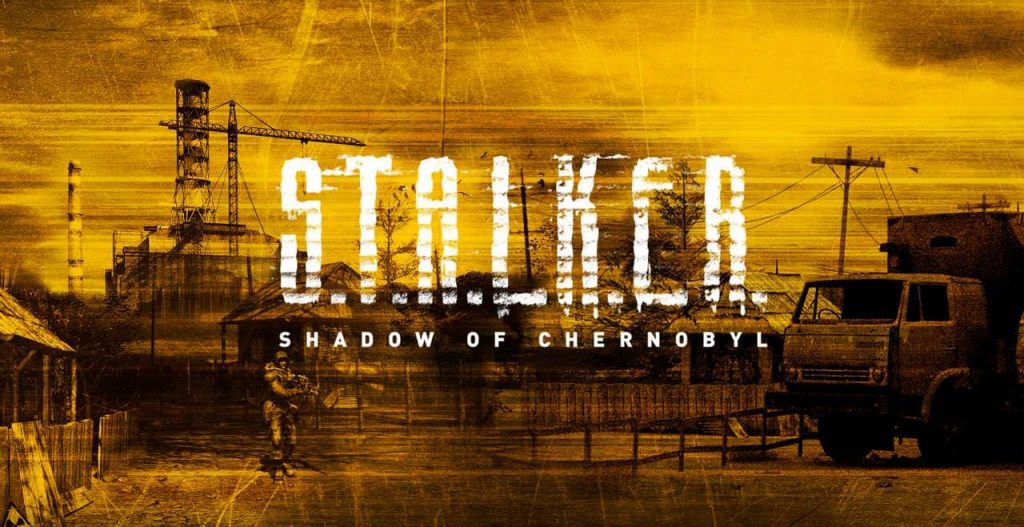
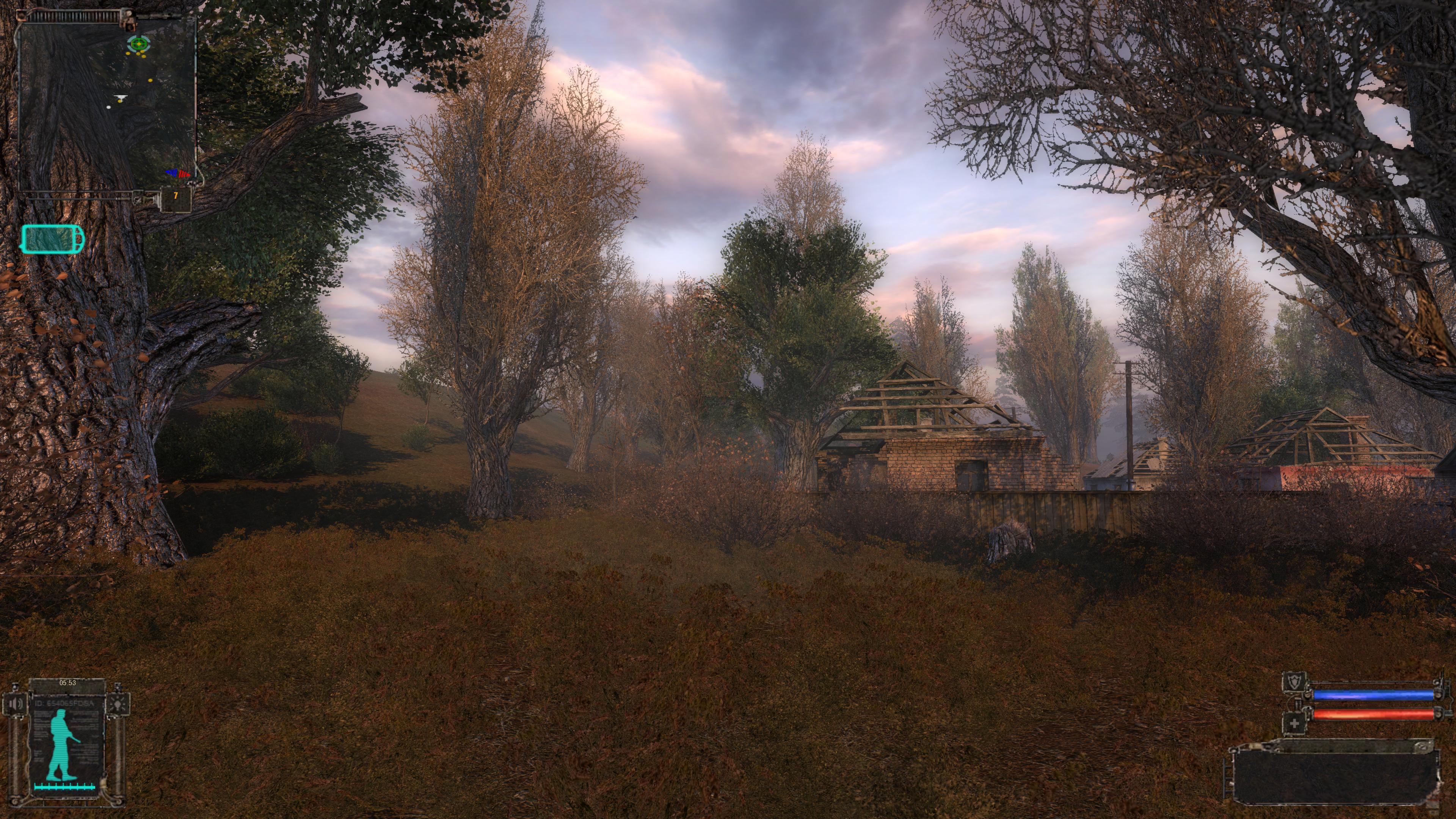
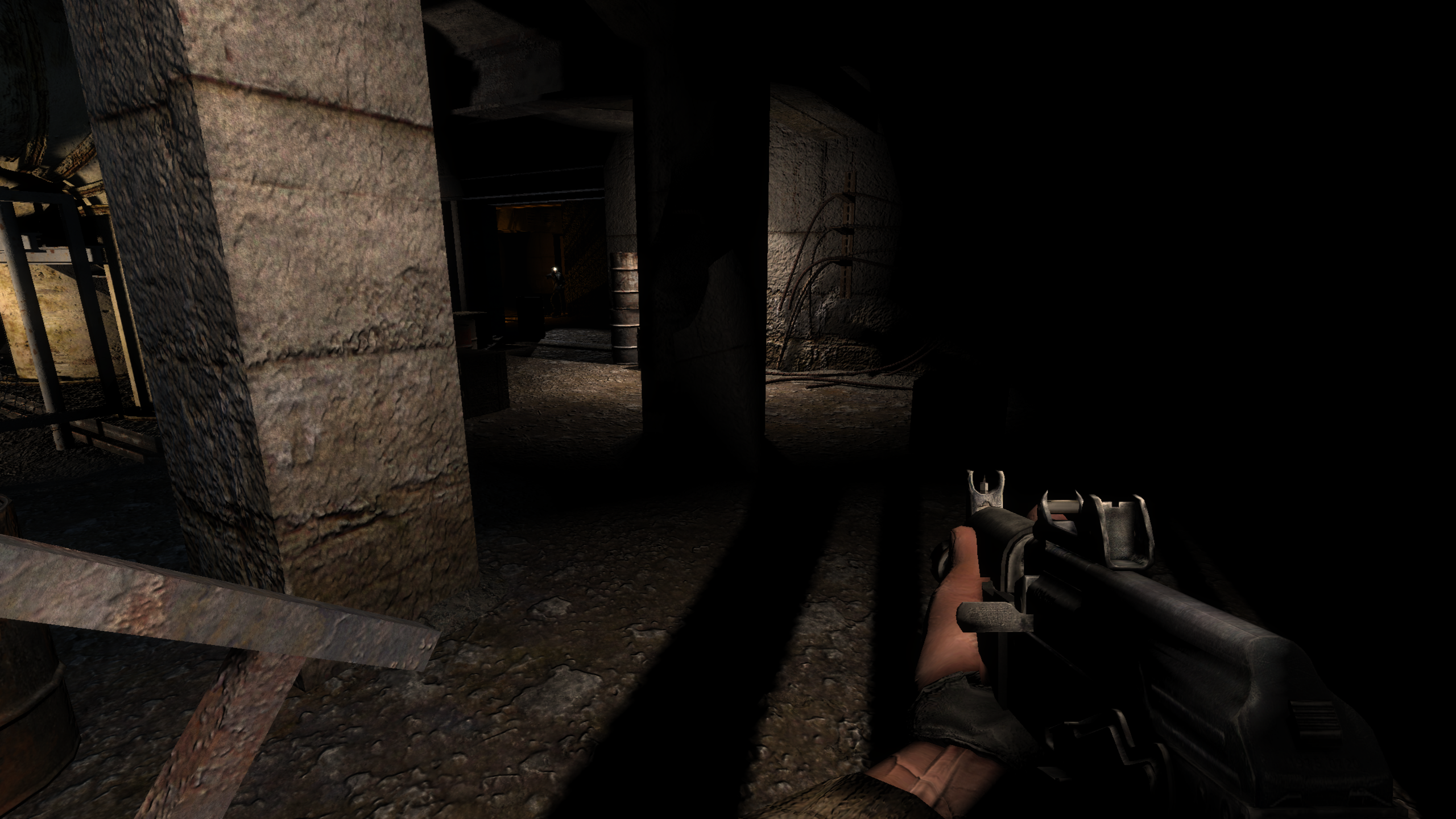

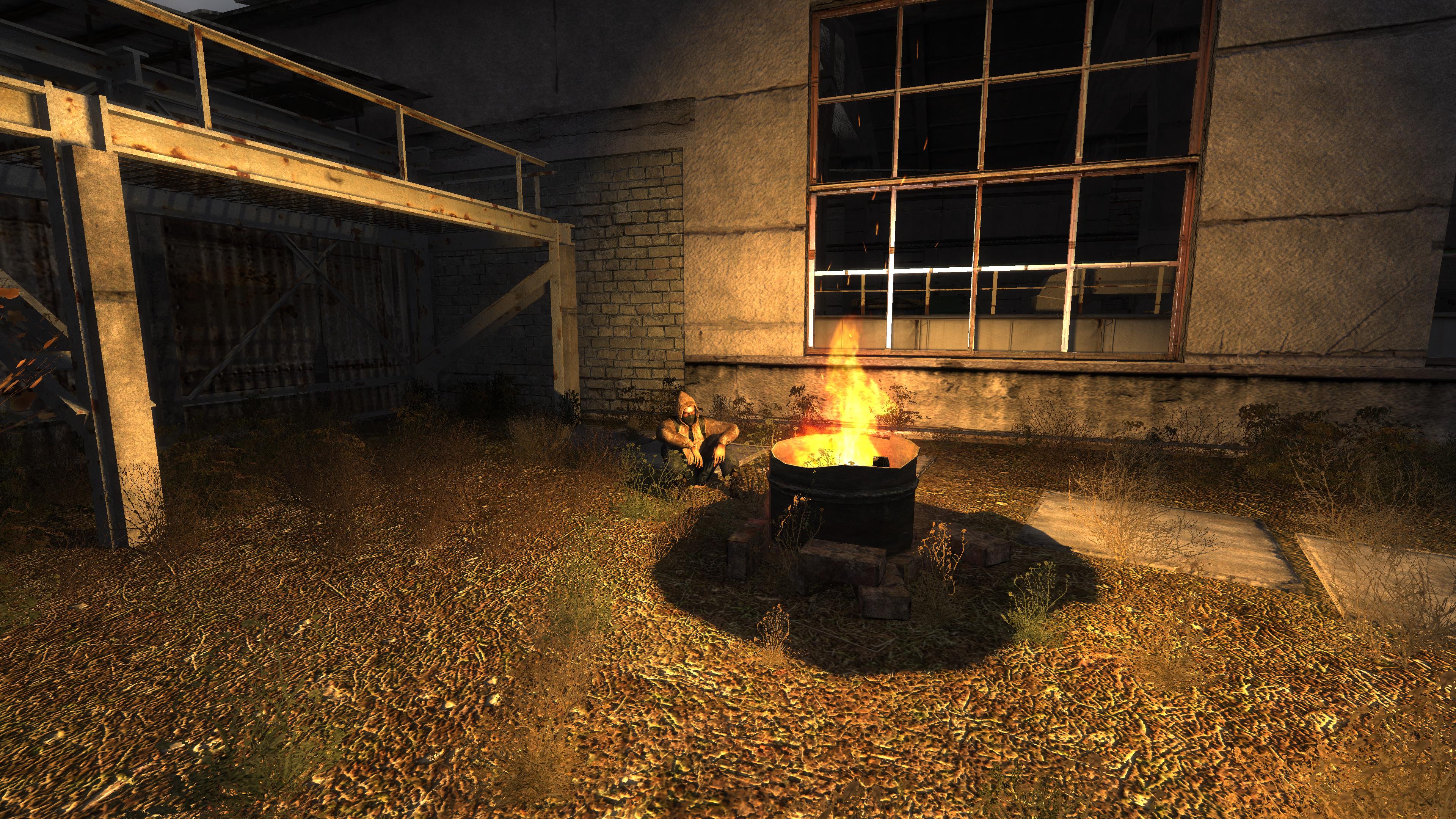
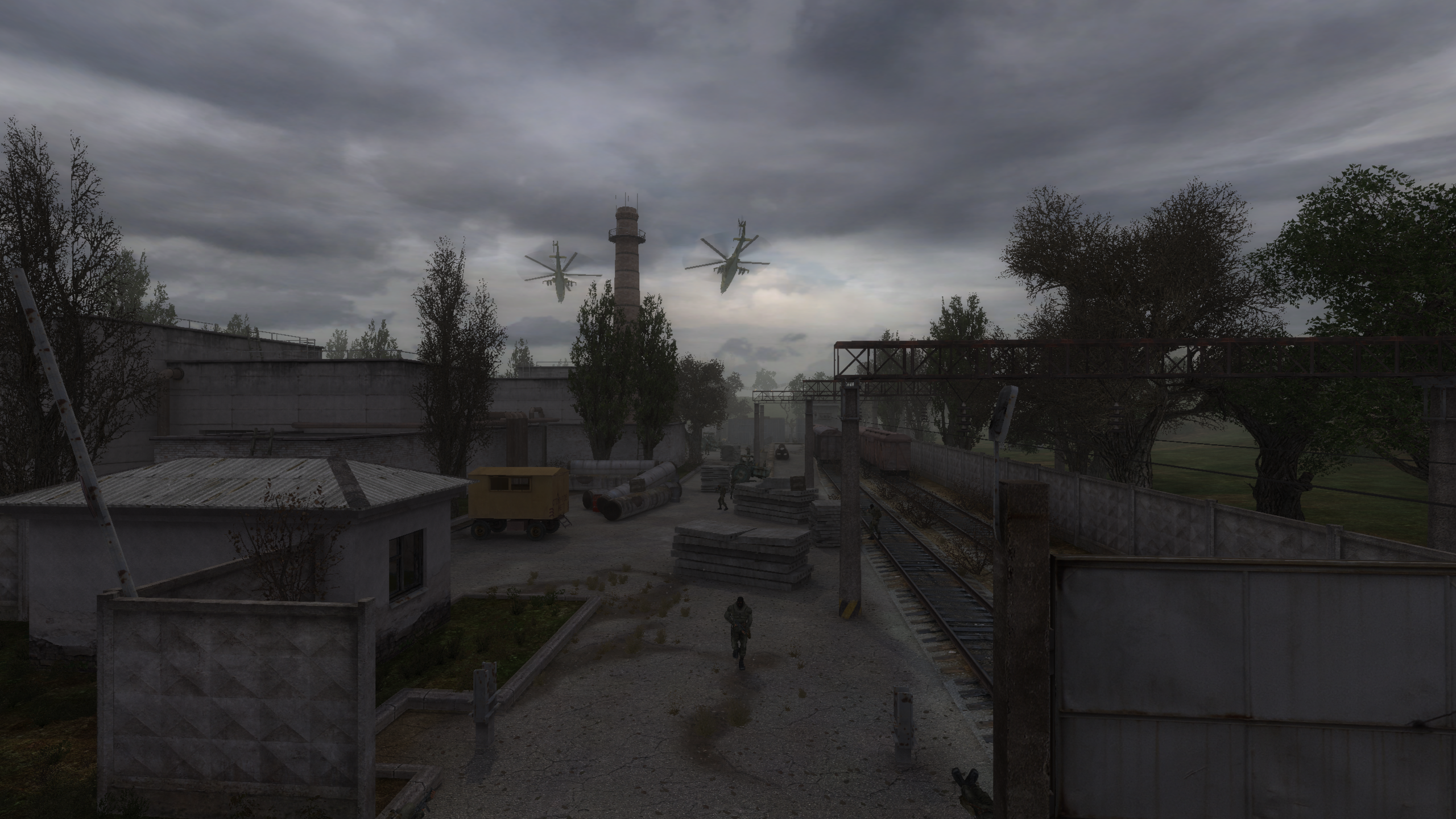
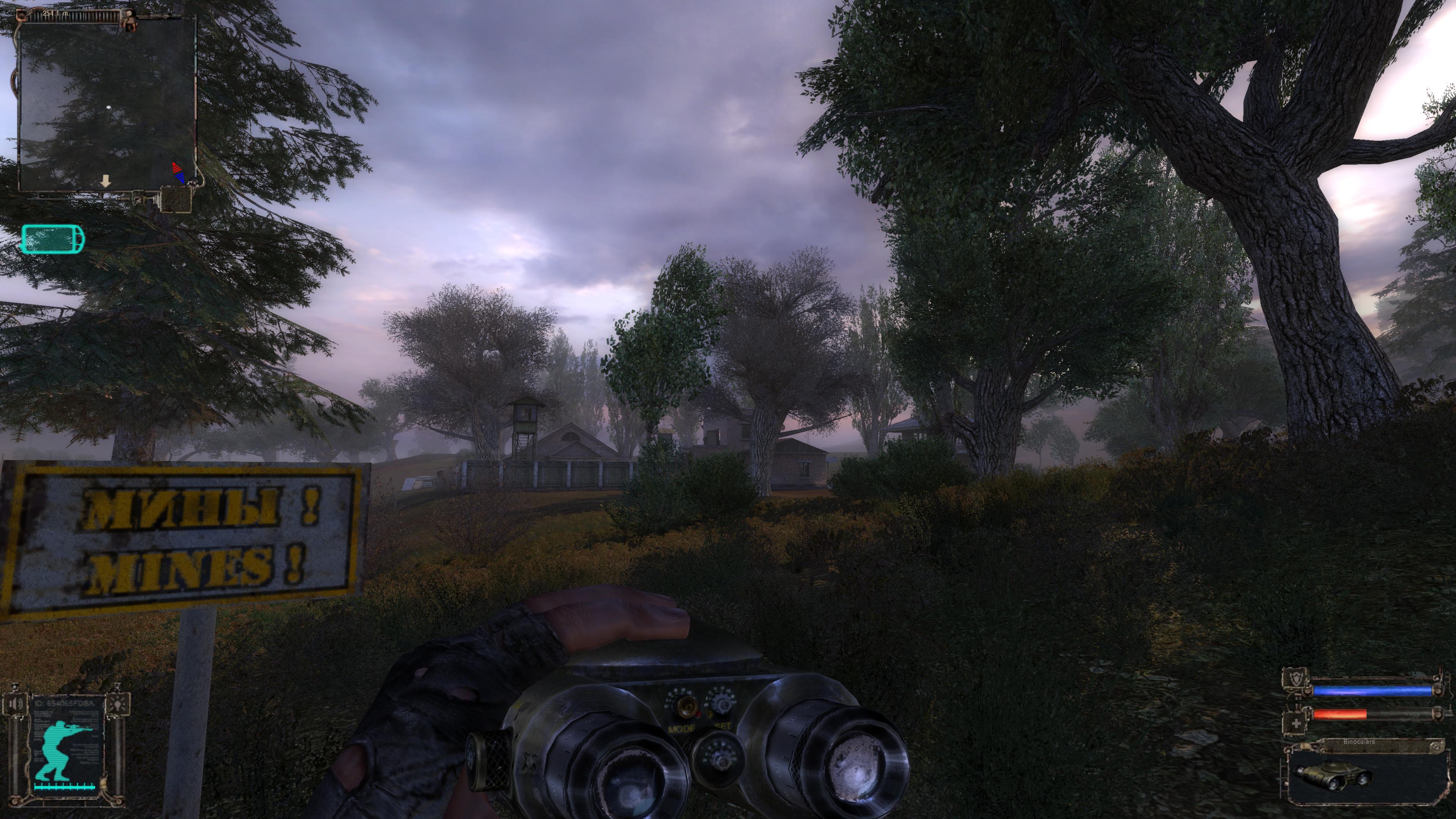
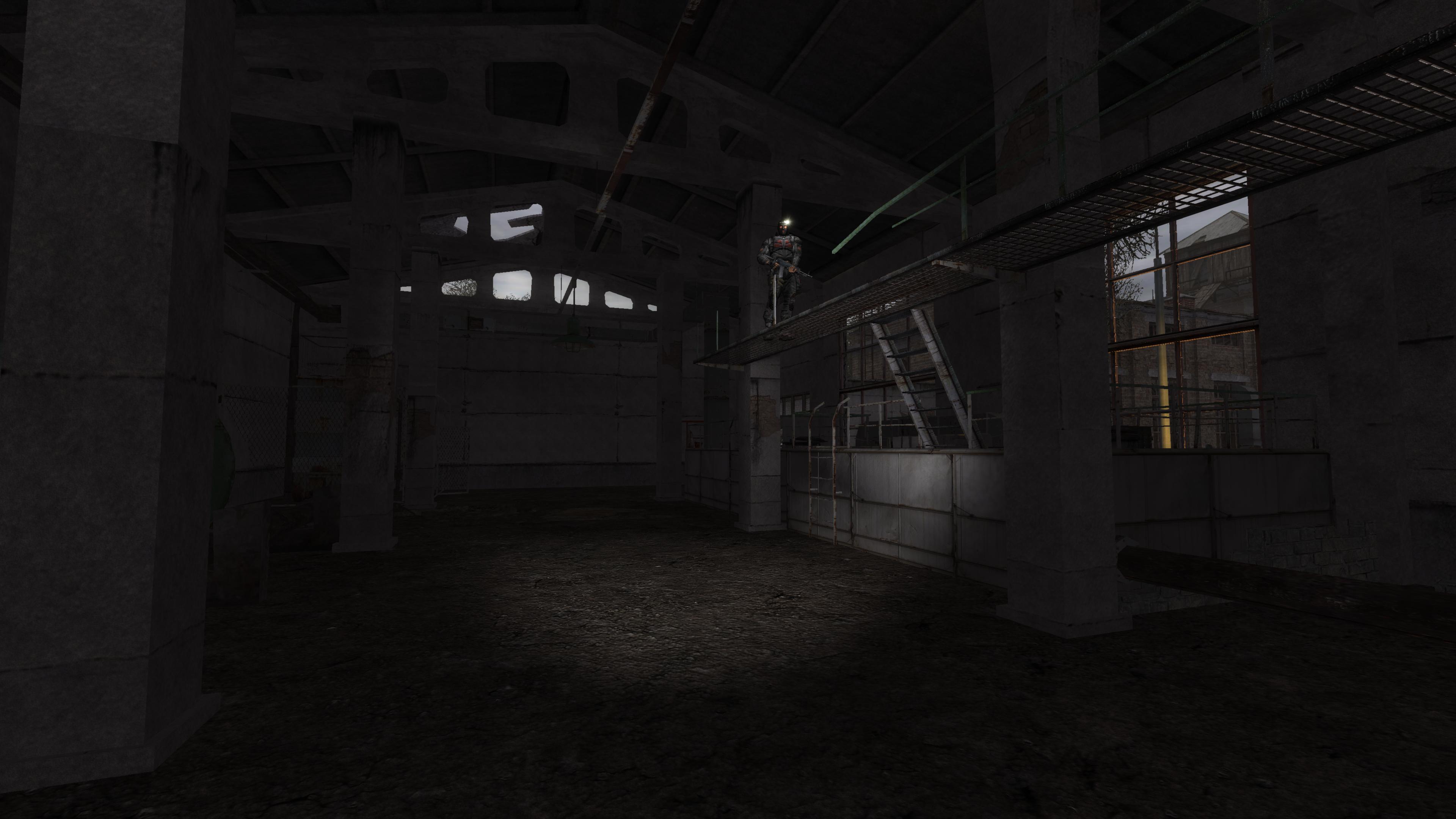
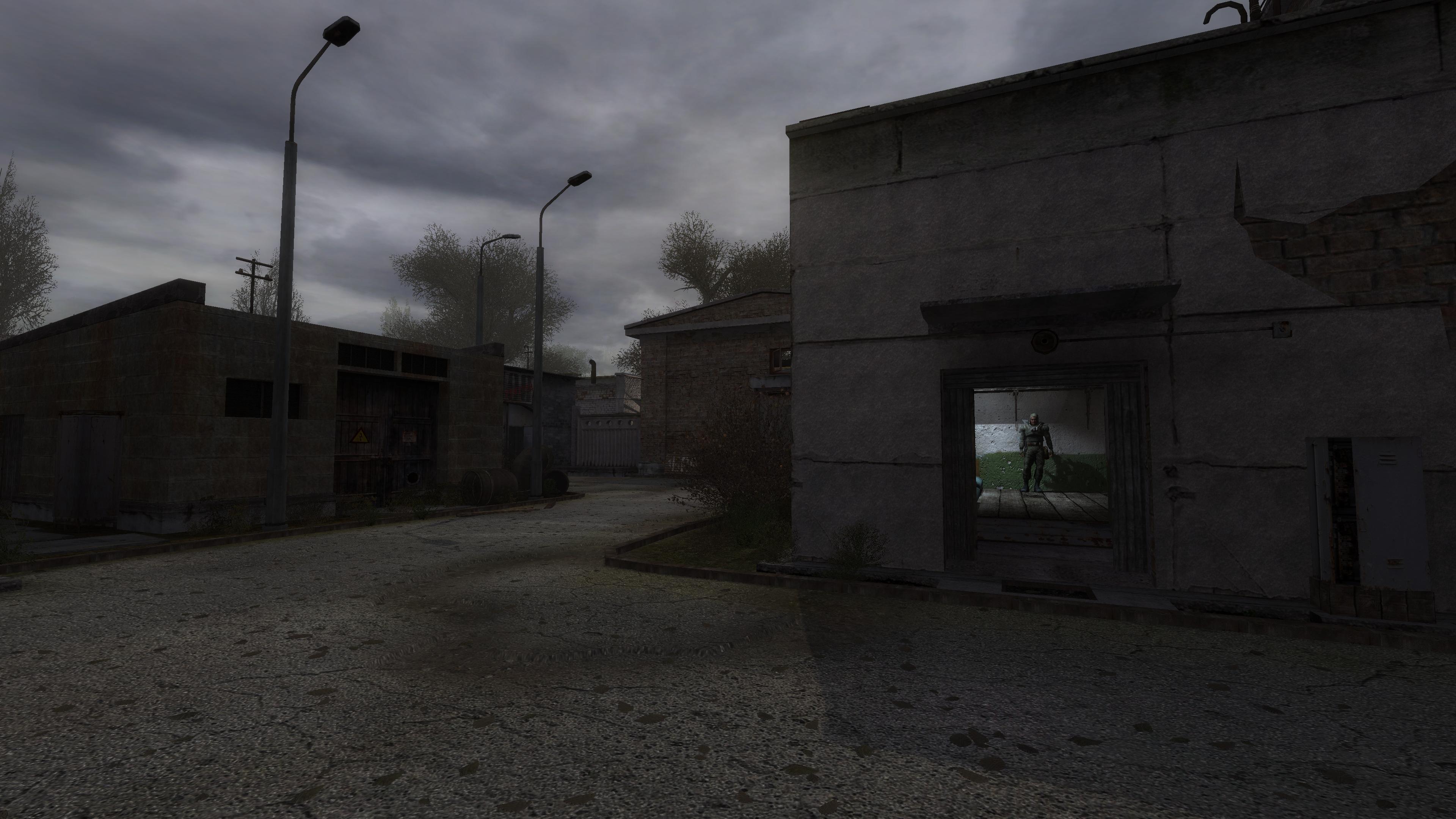
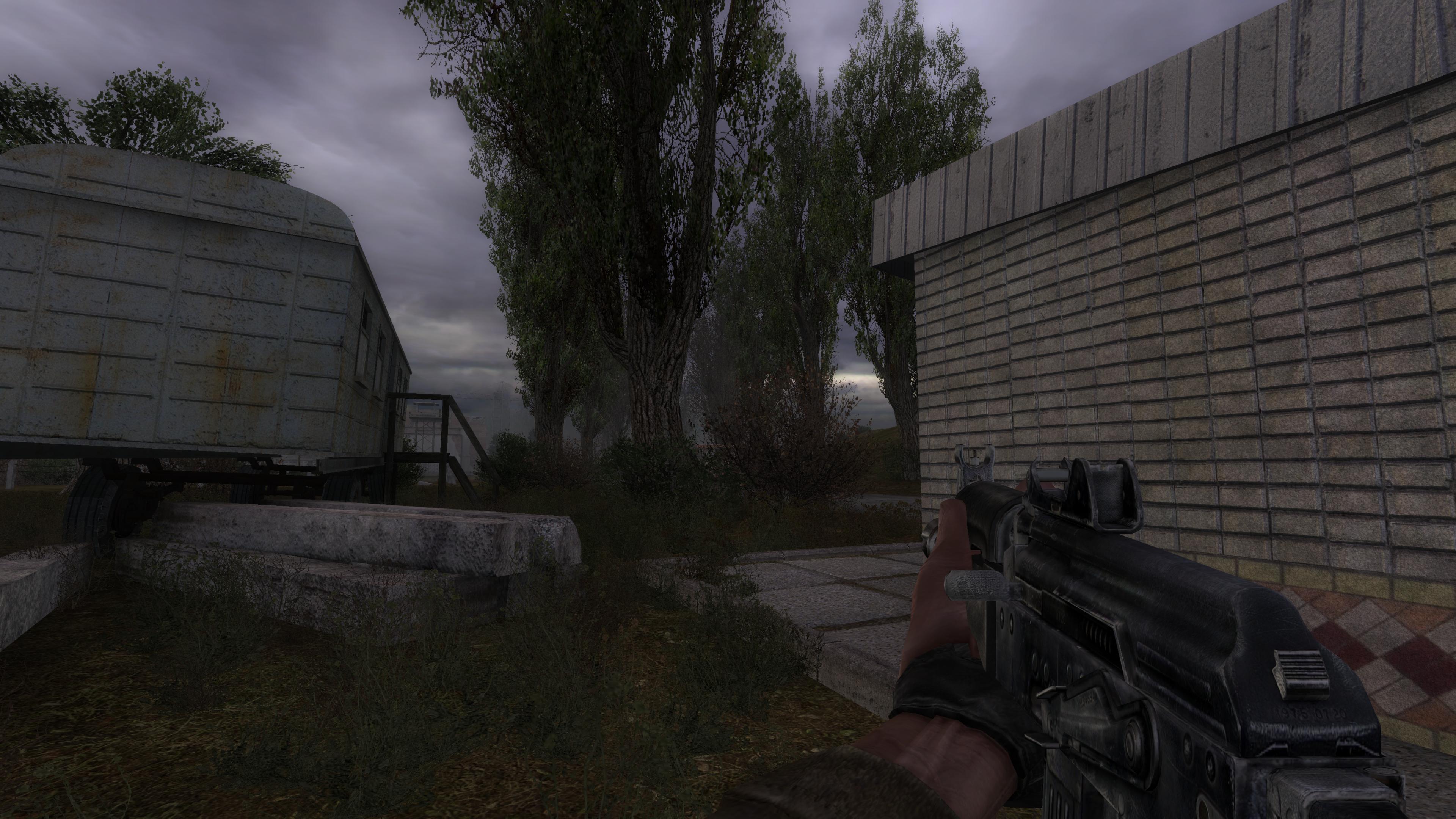

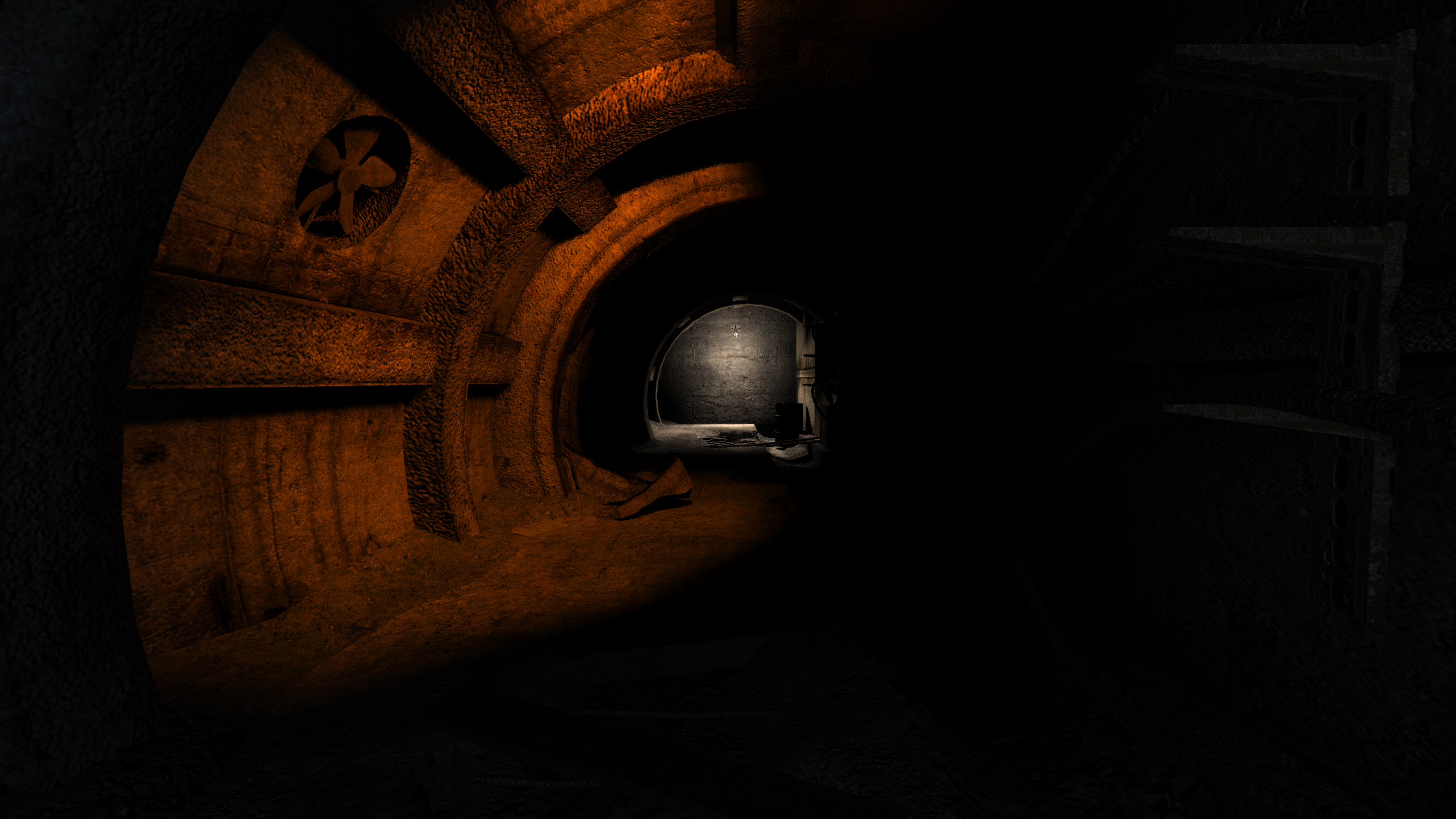


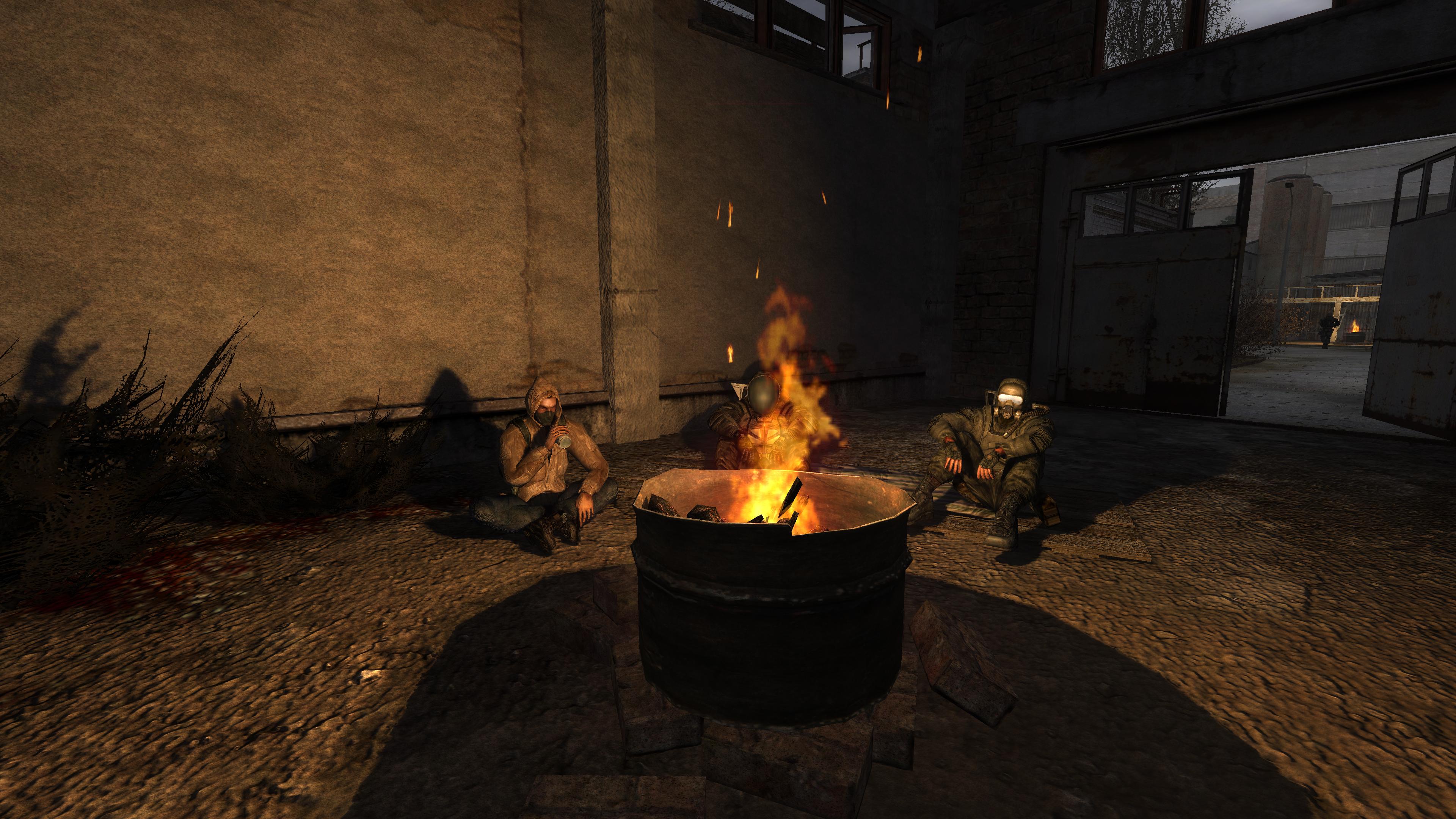
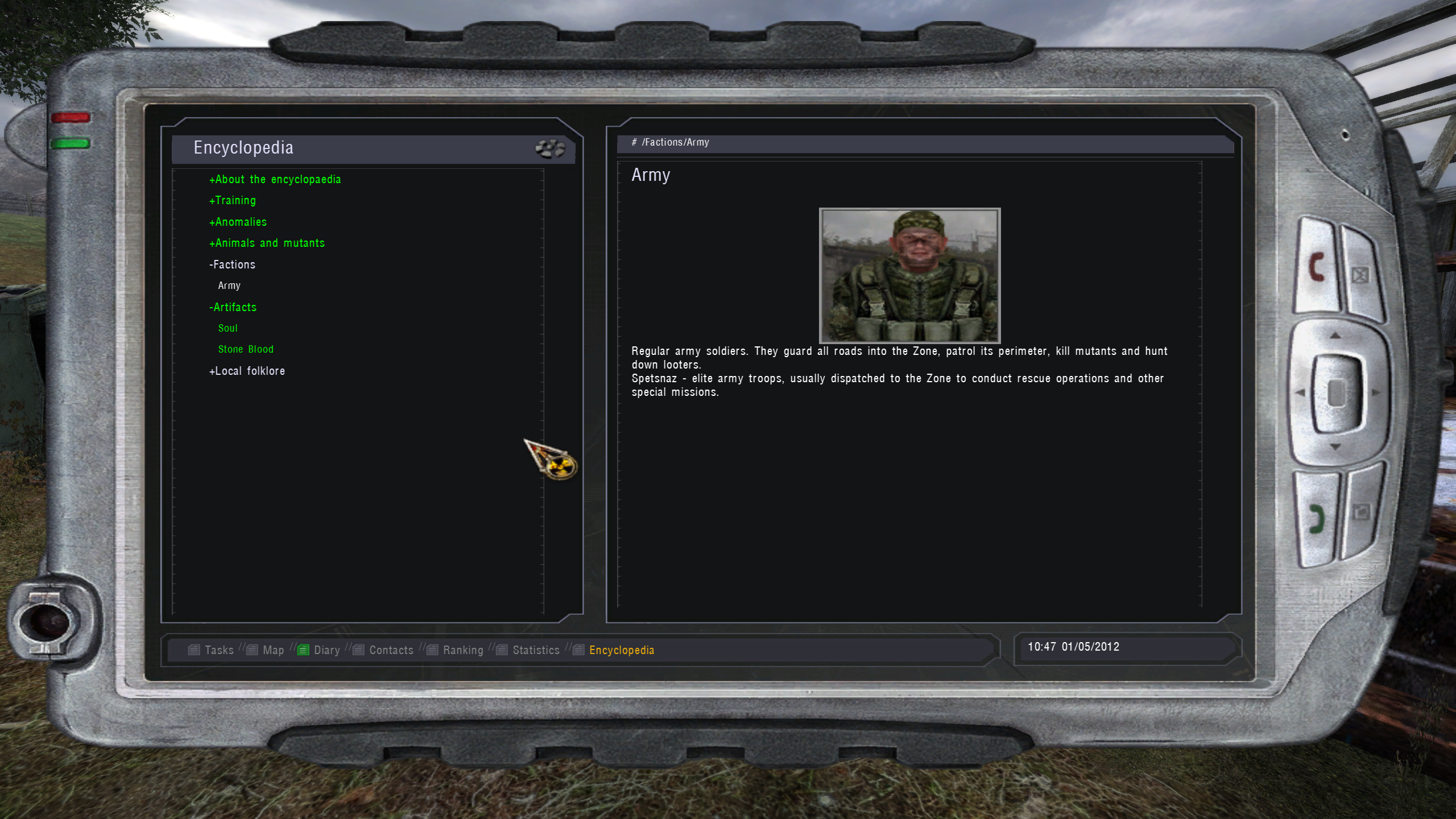

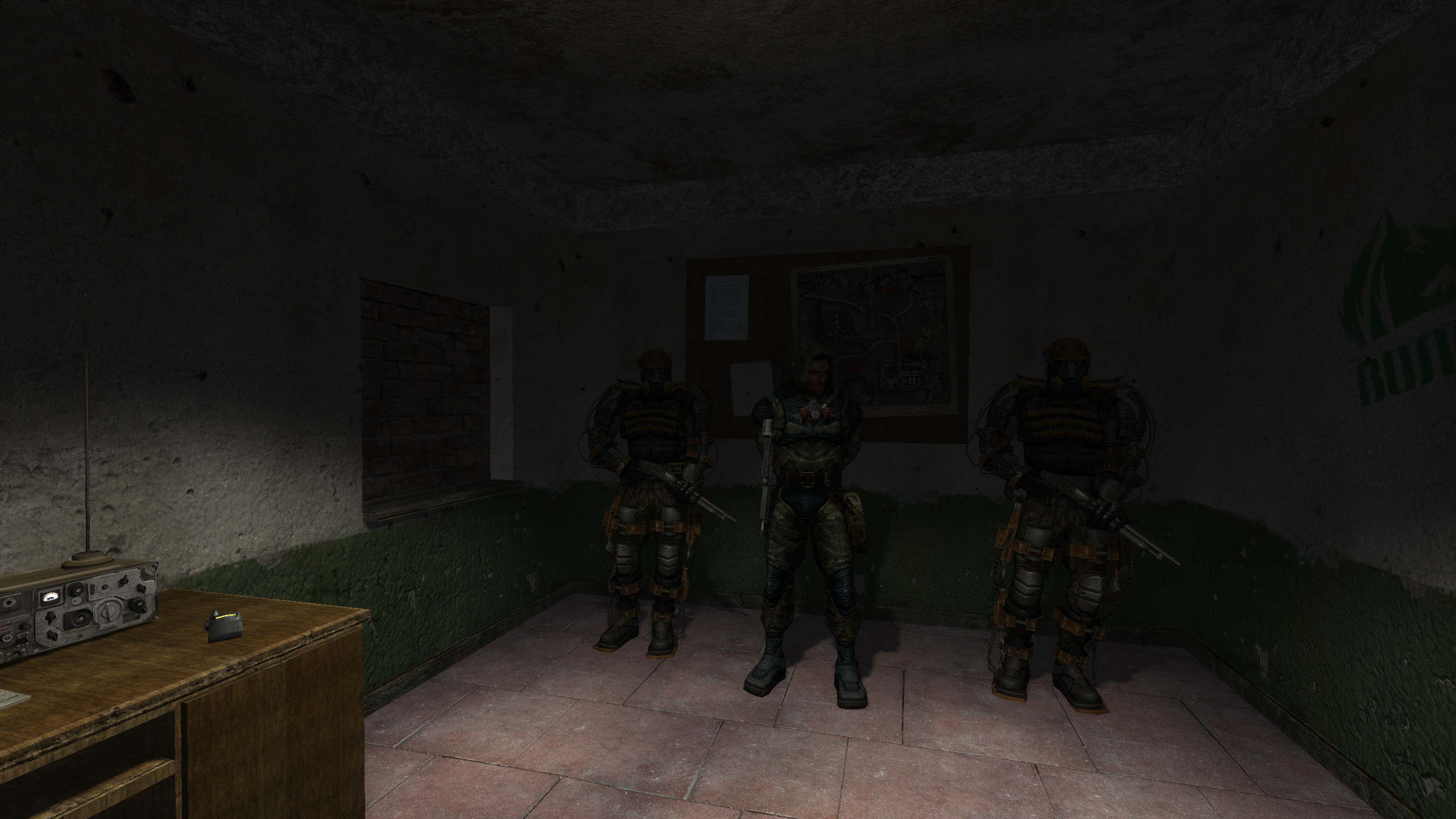


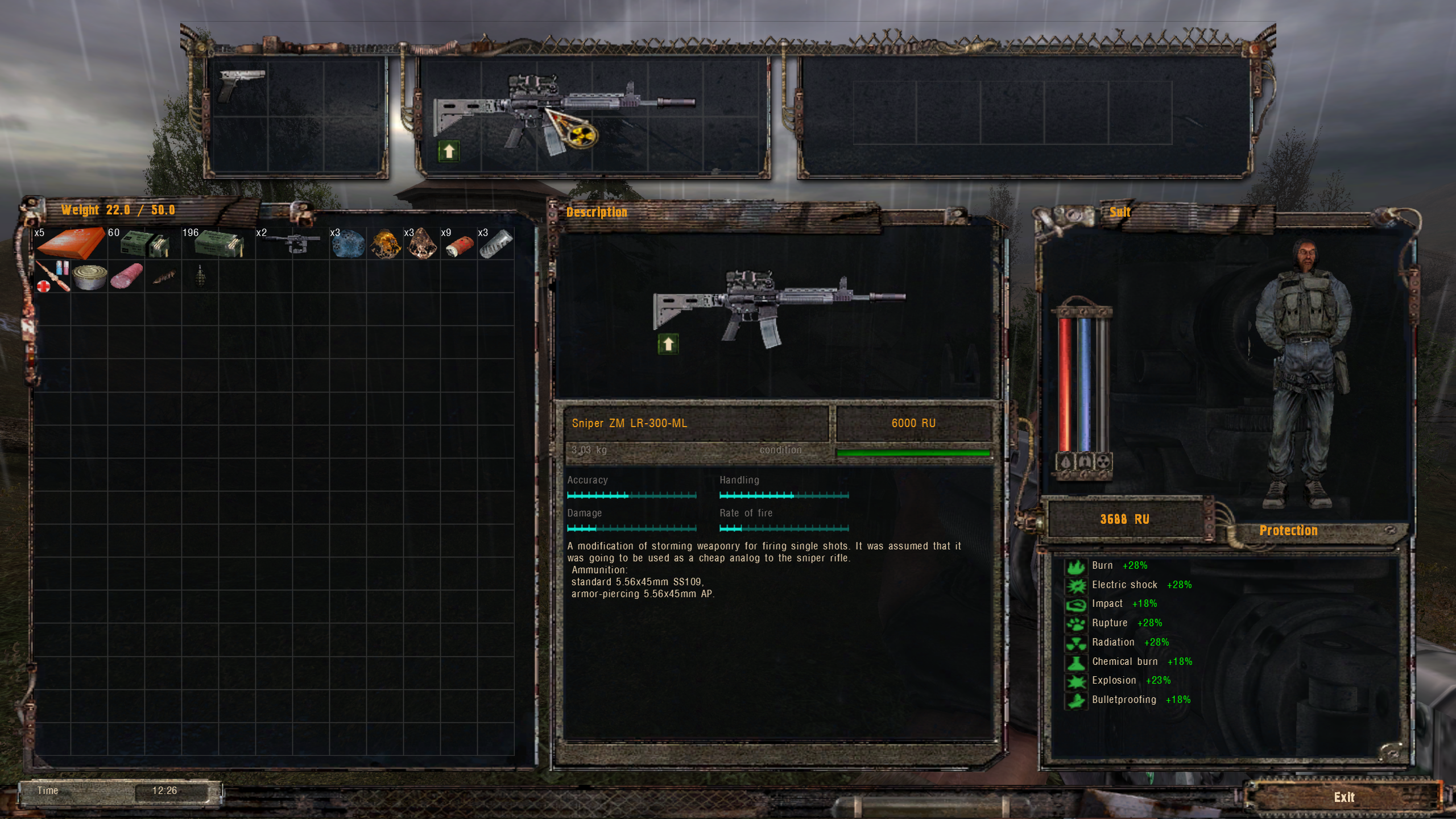
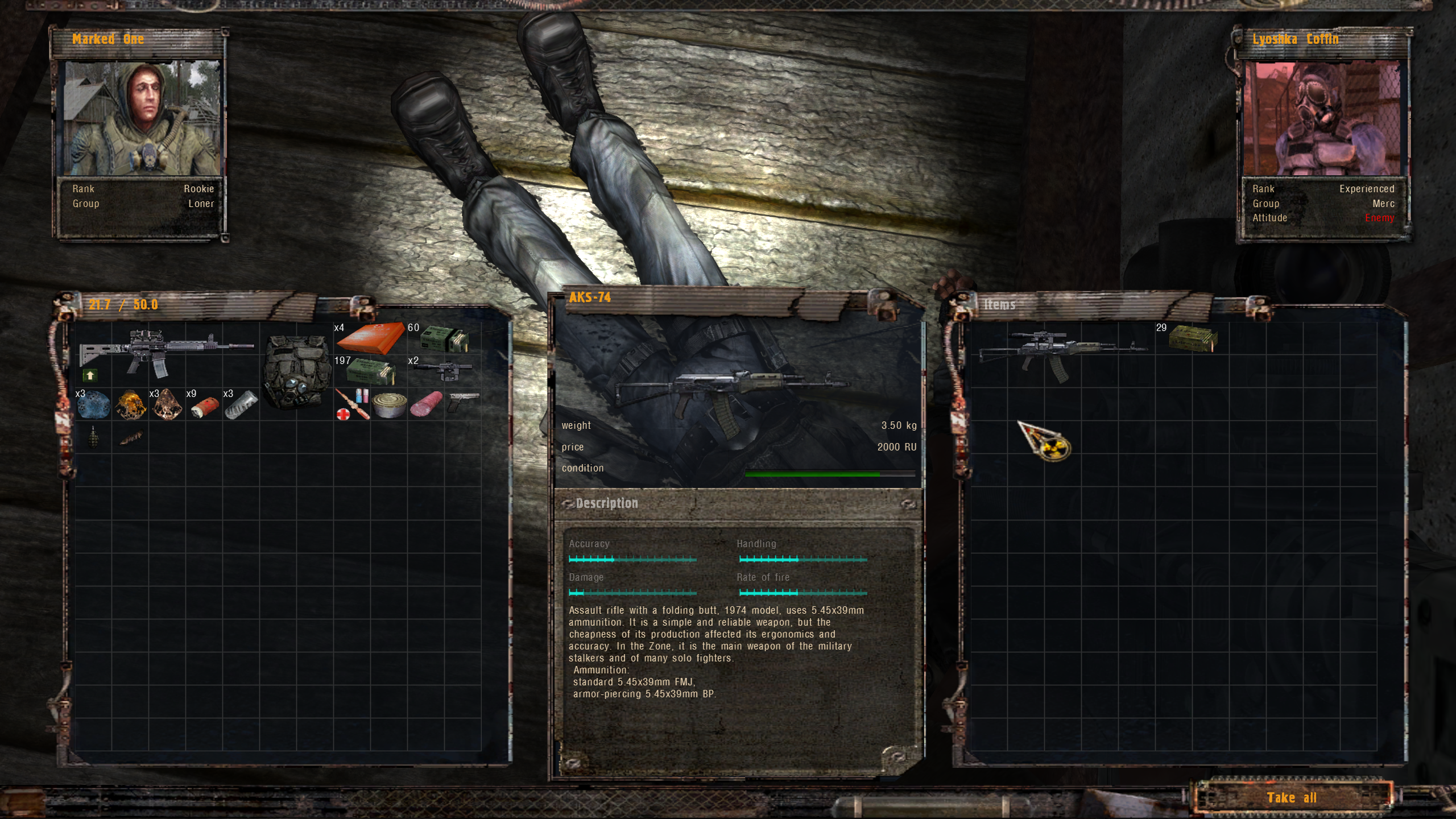
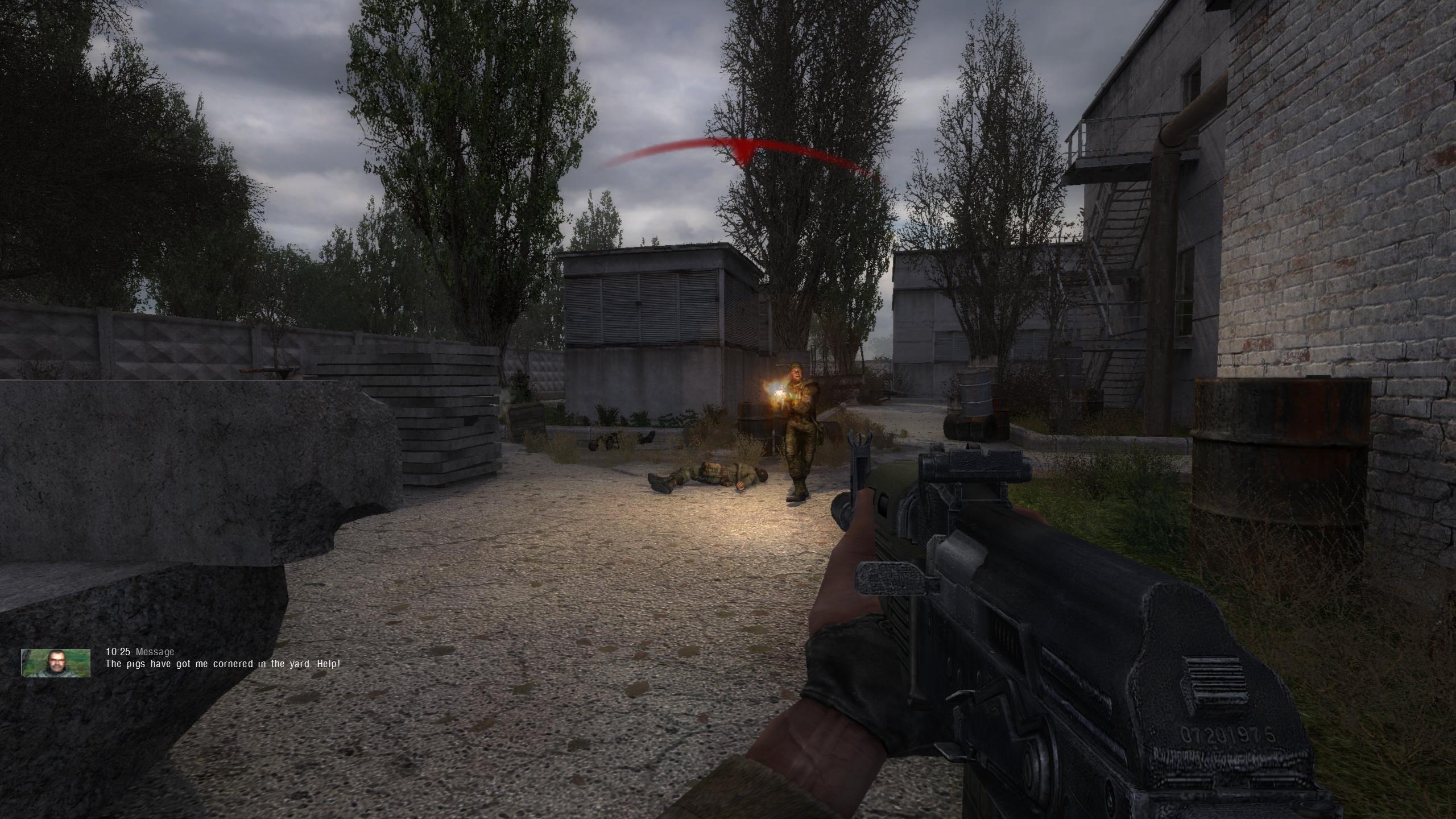
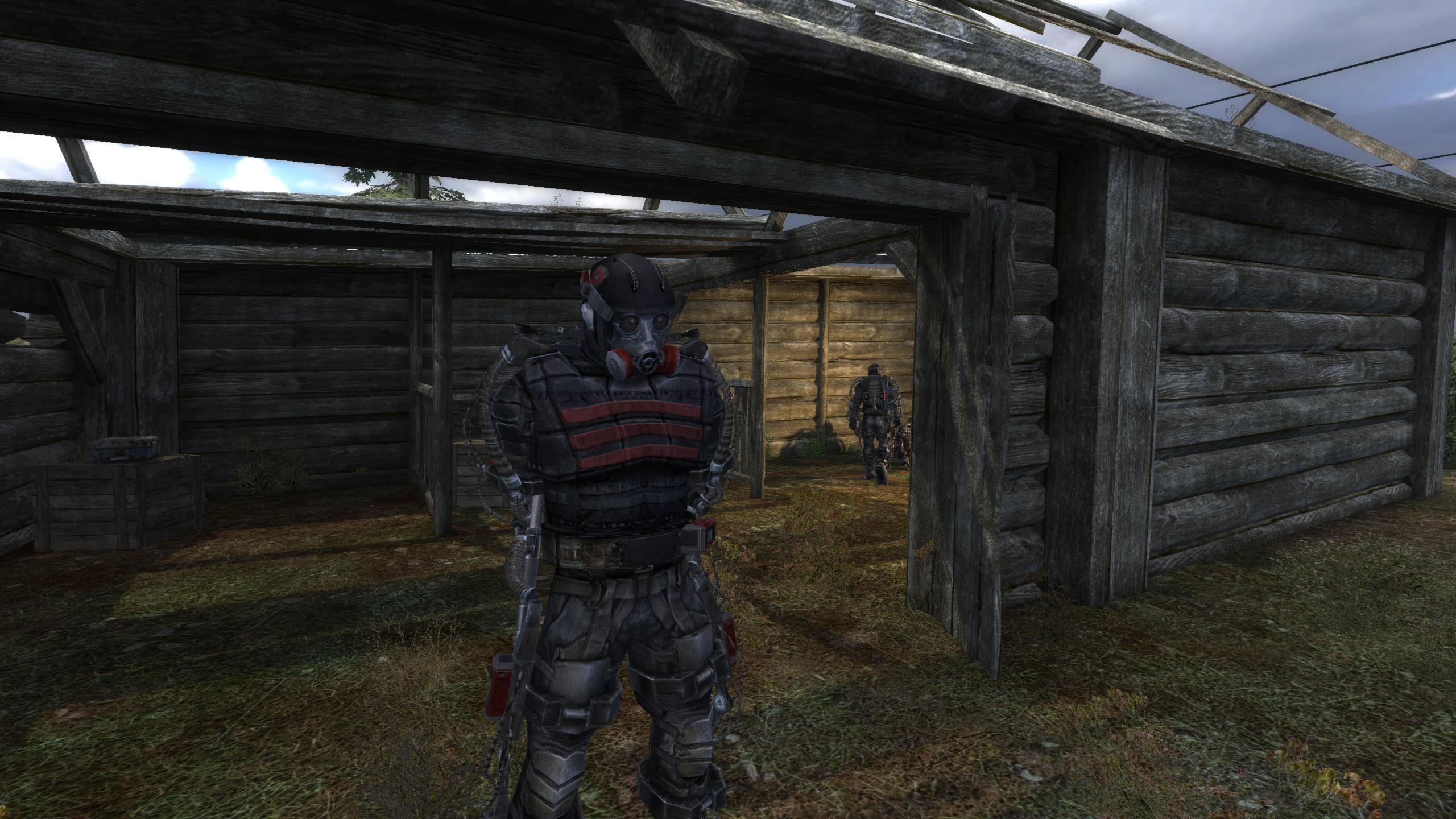
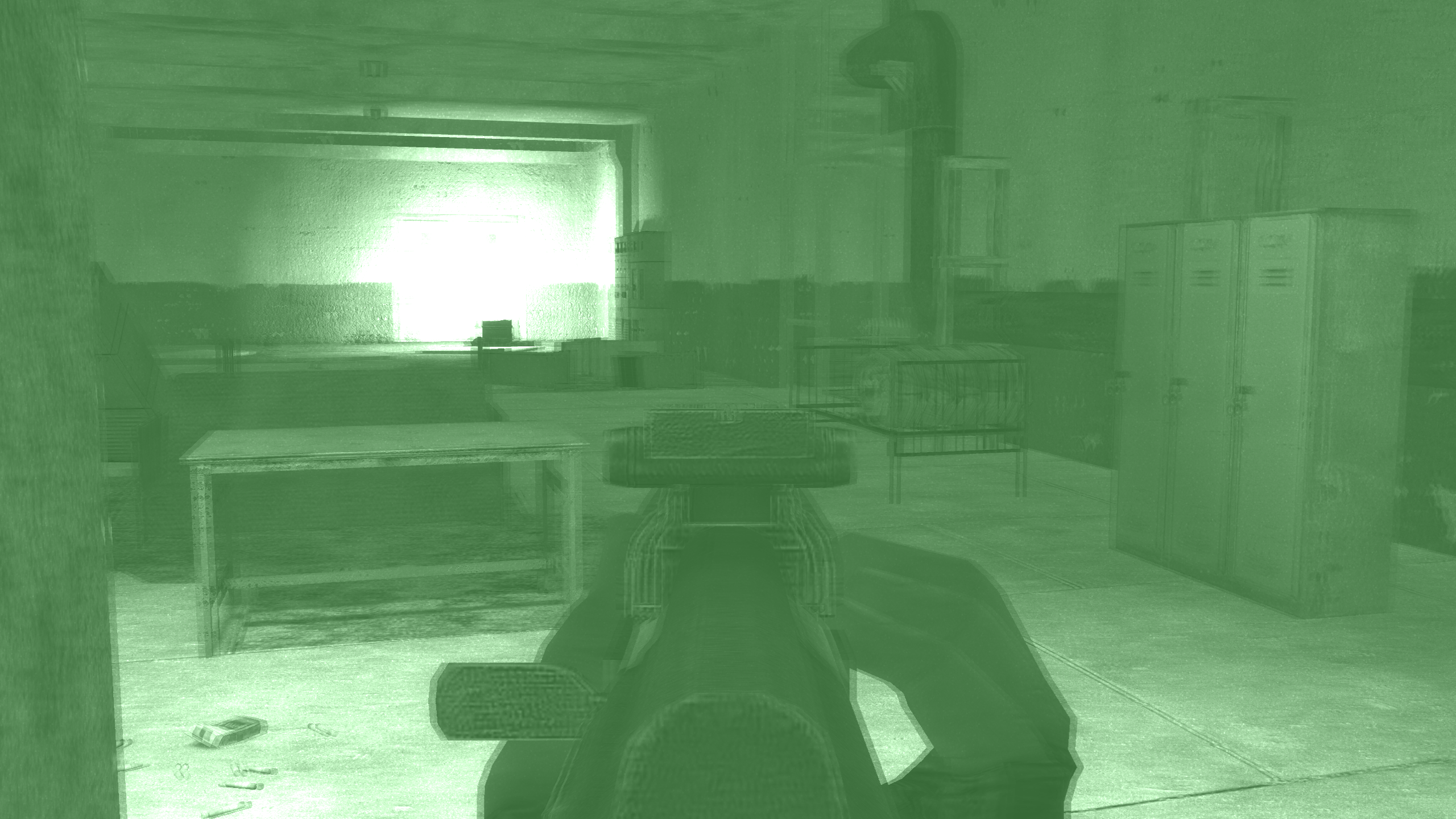
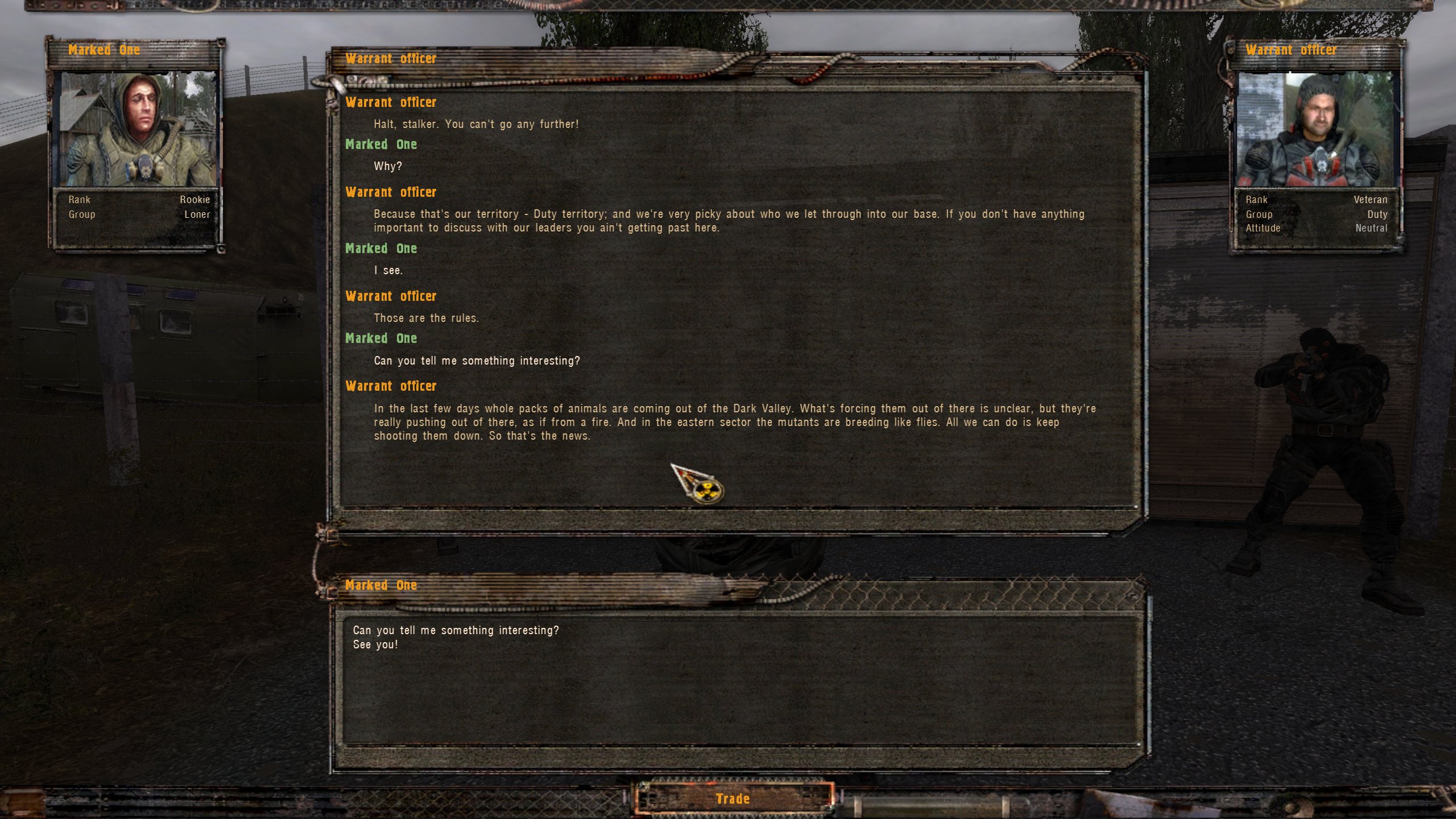
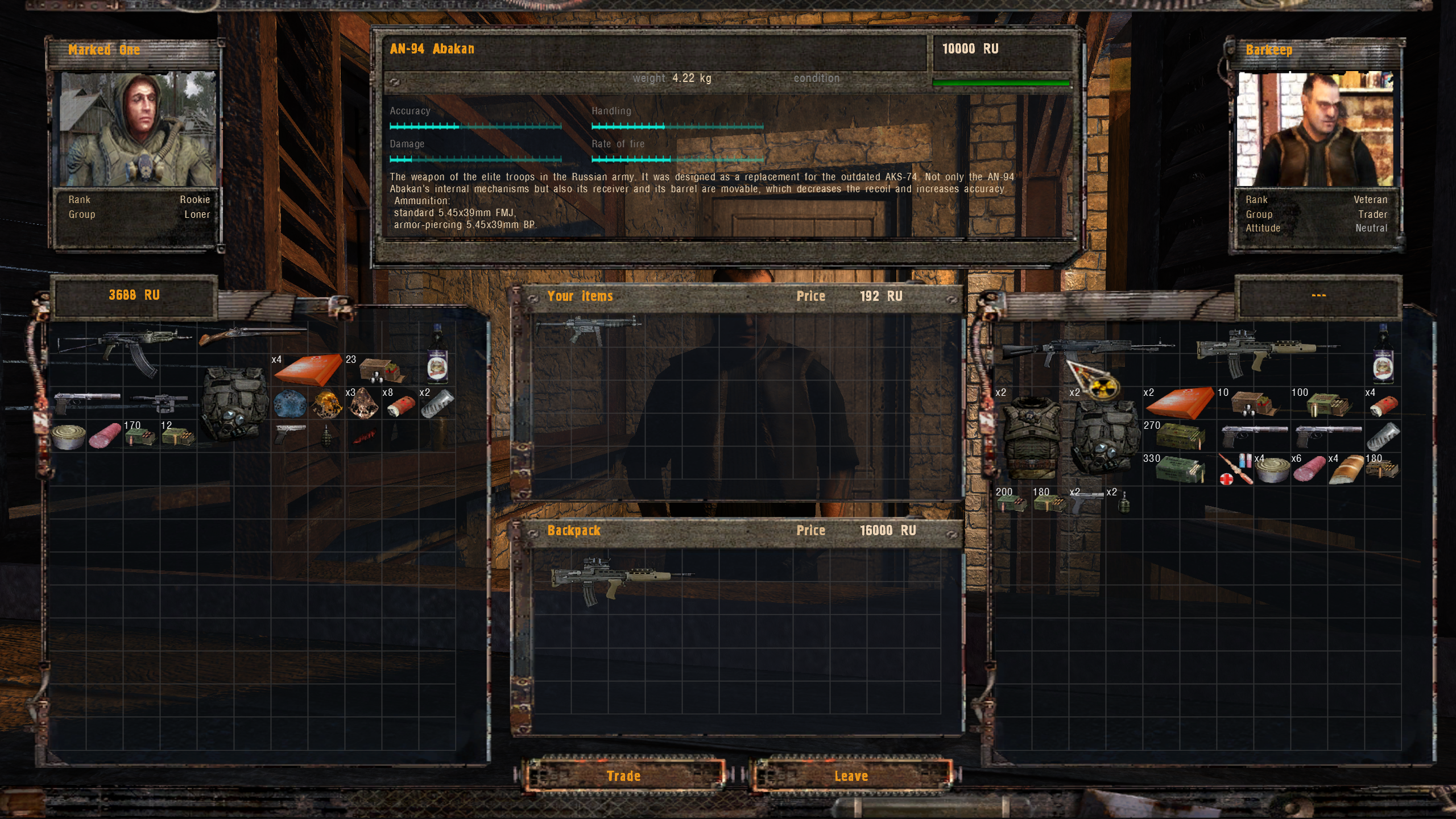

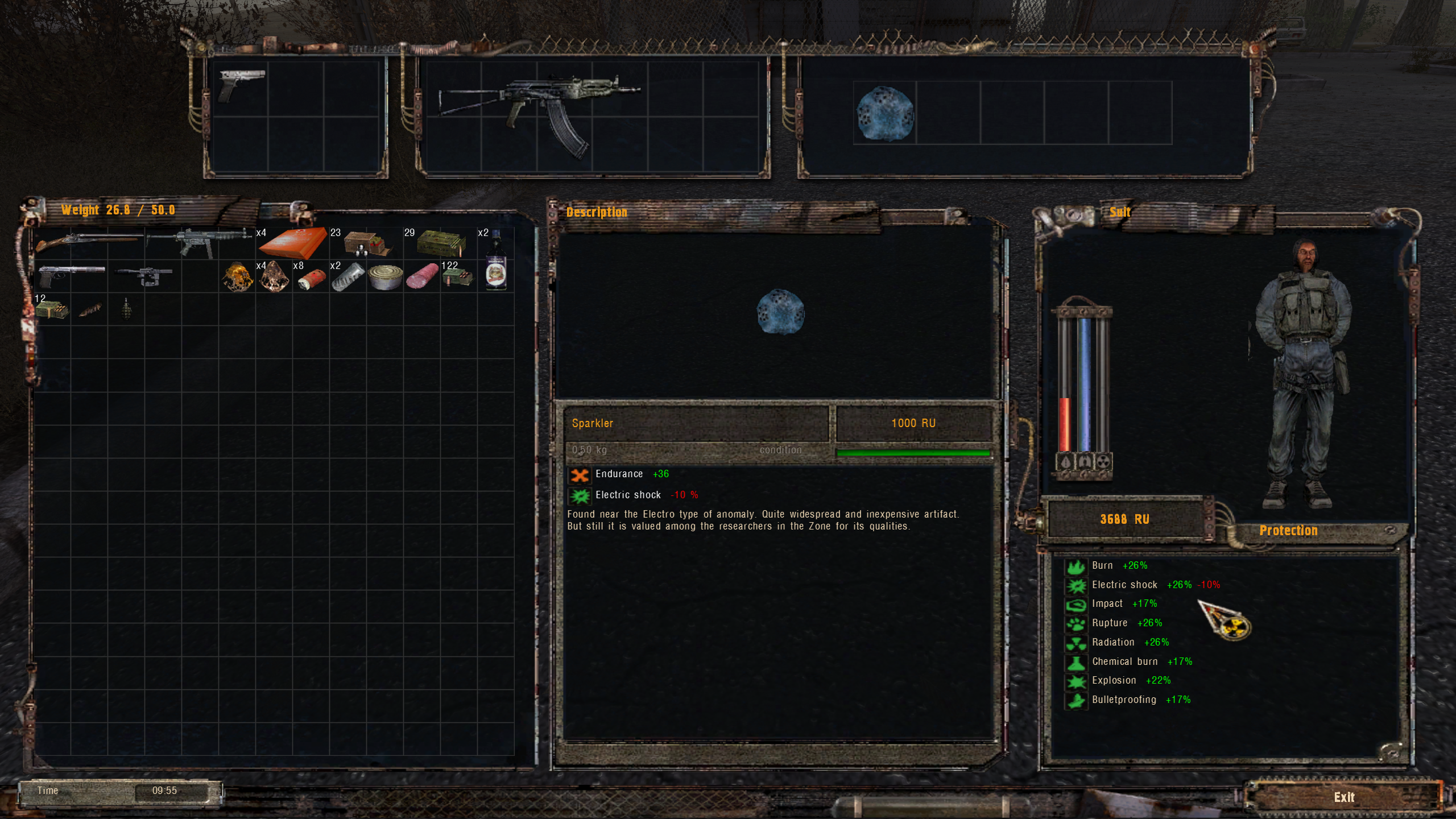
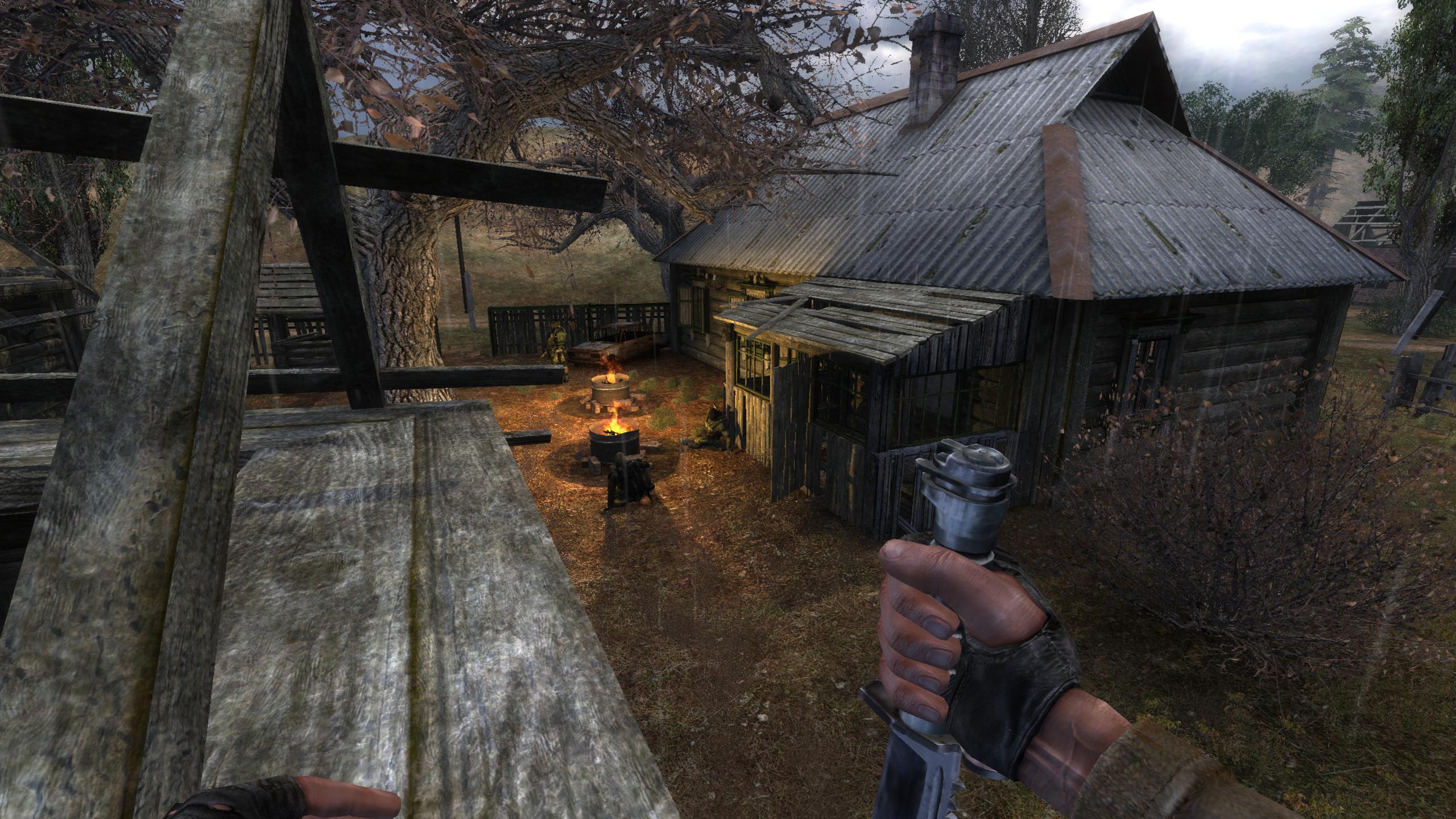


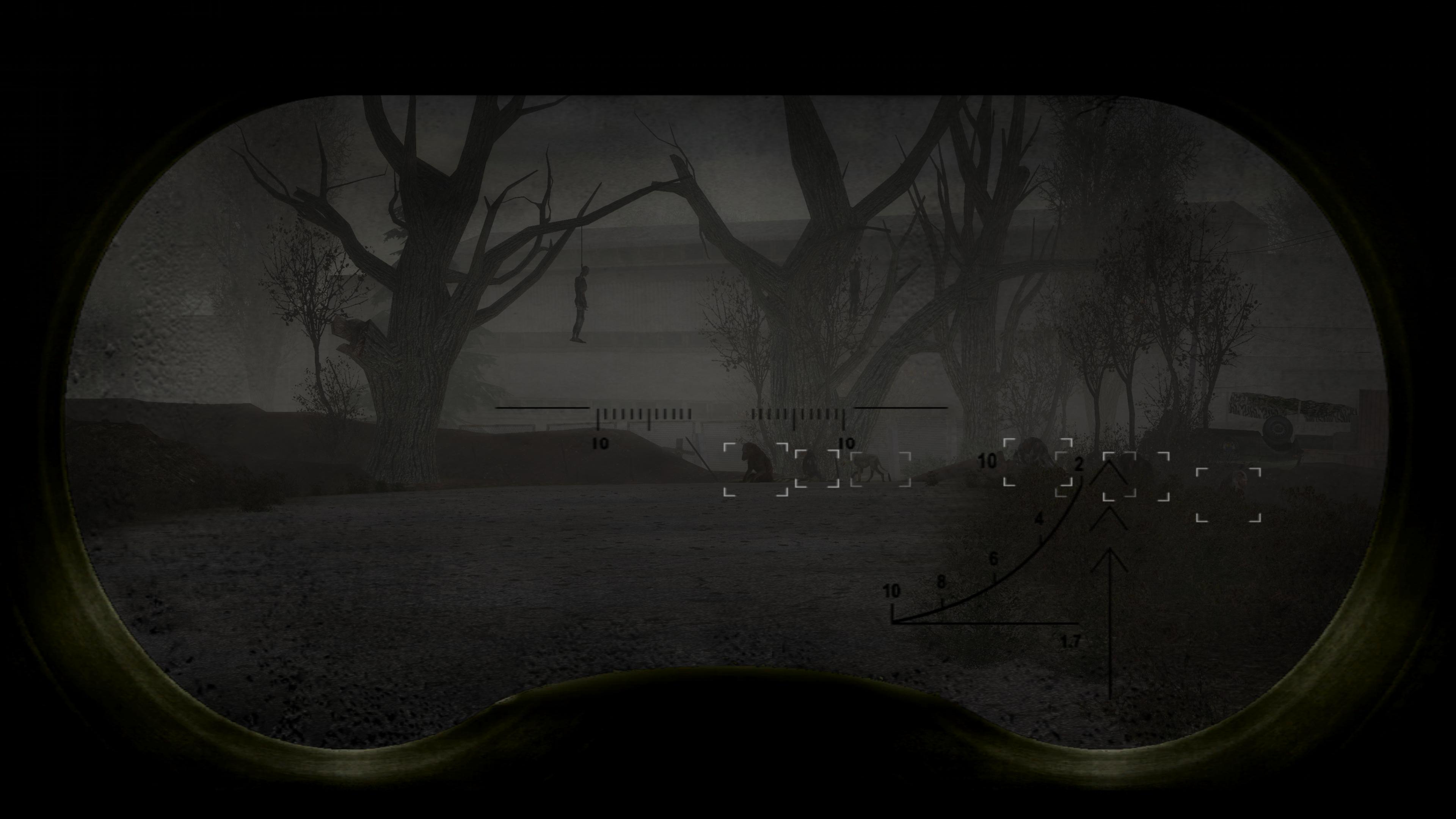



 (4 votes, average: 3.25 out of 5)
(4 votes, average: 3.25 out of 5)